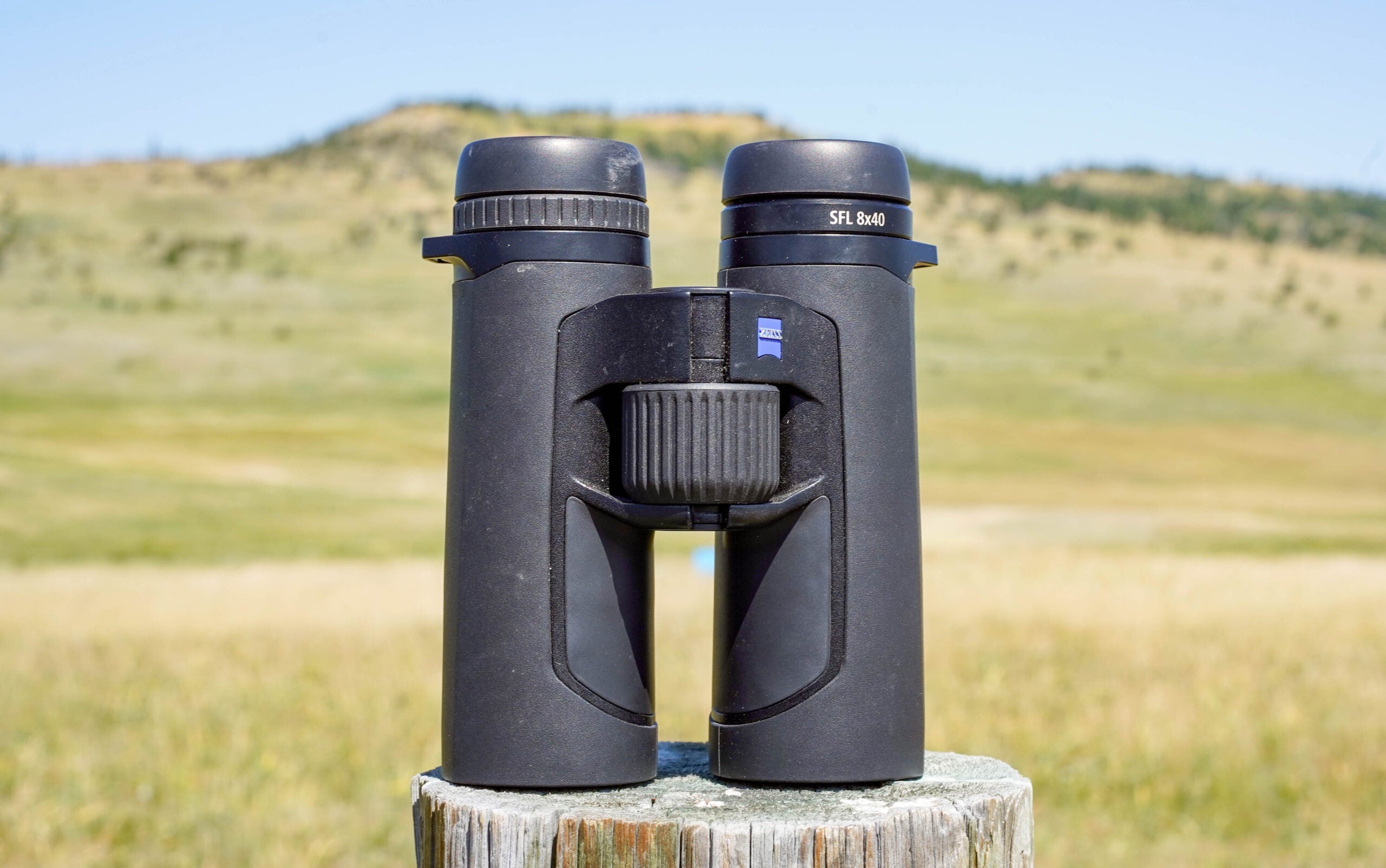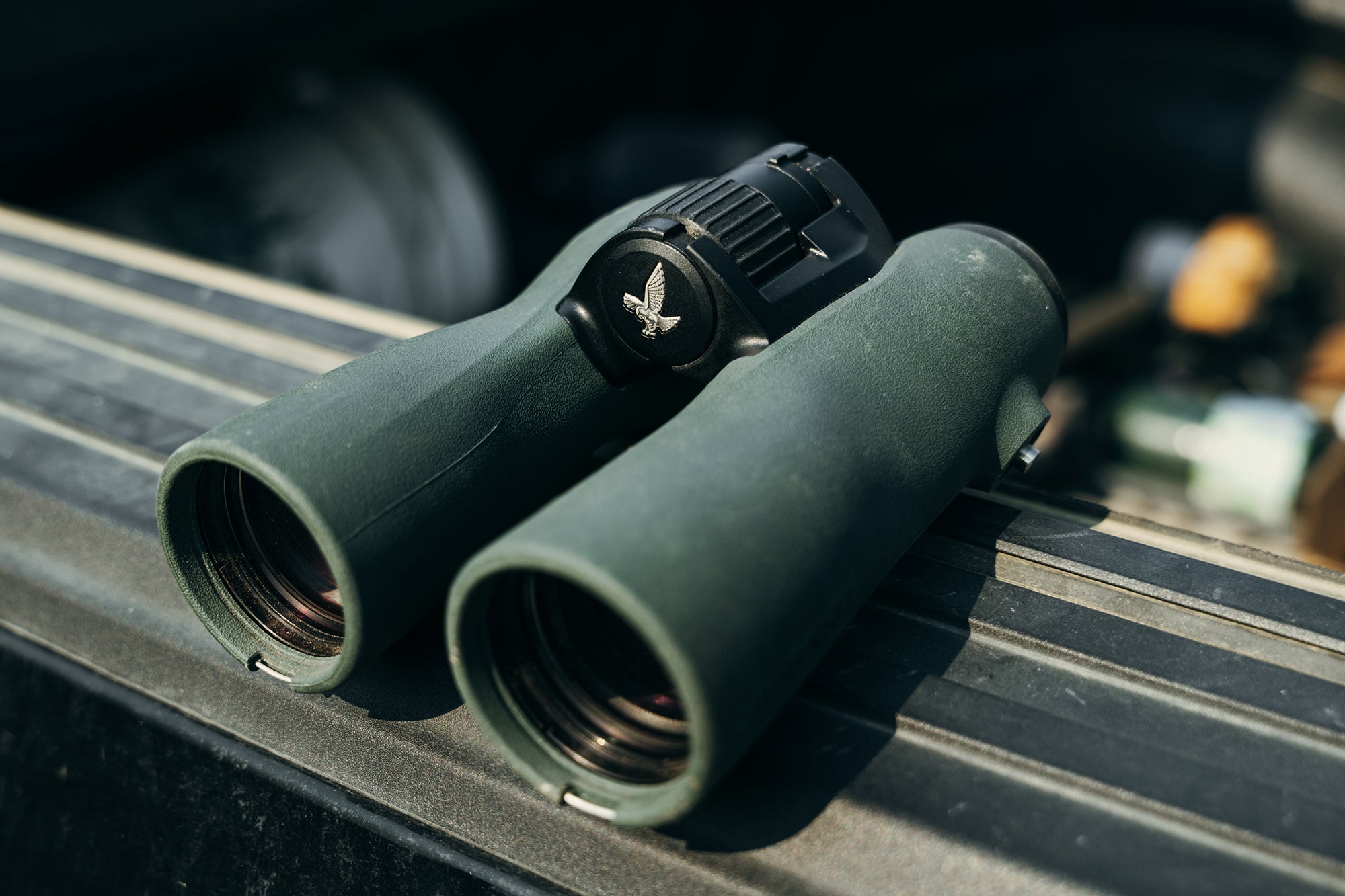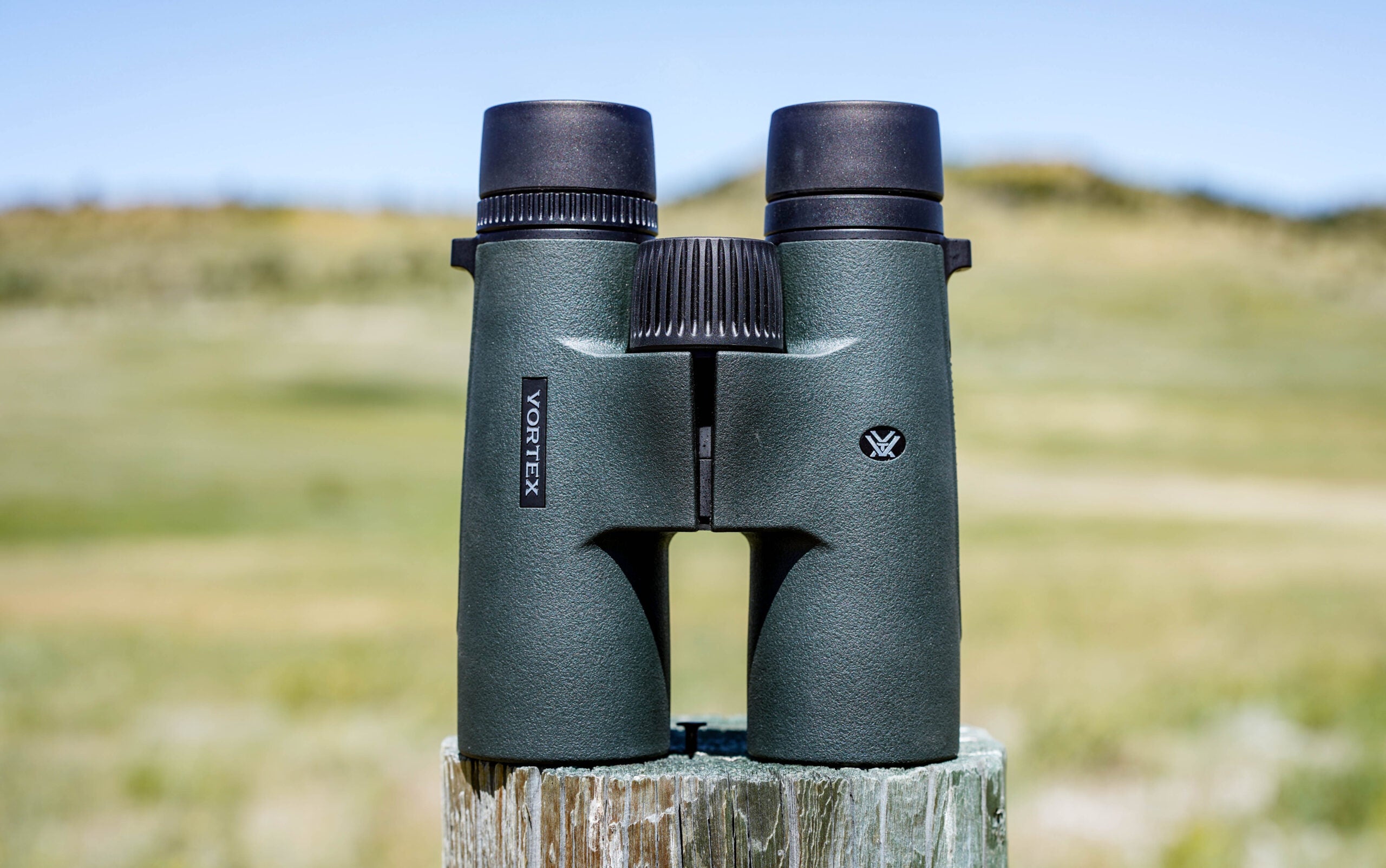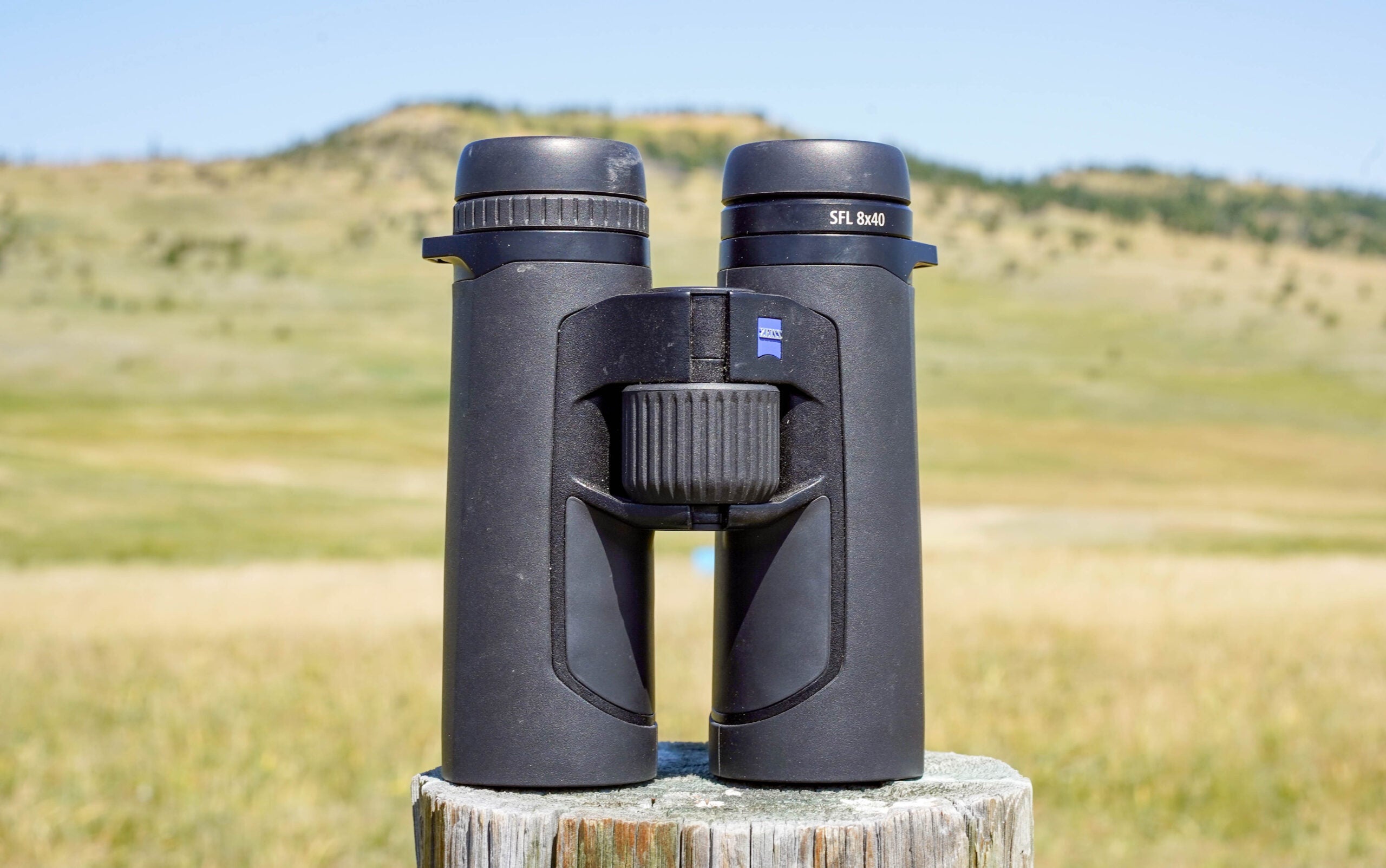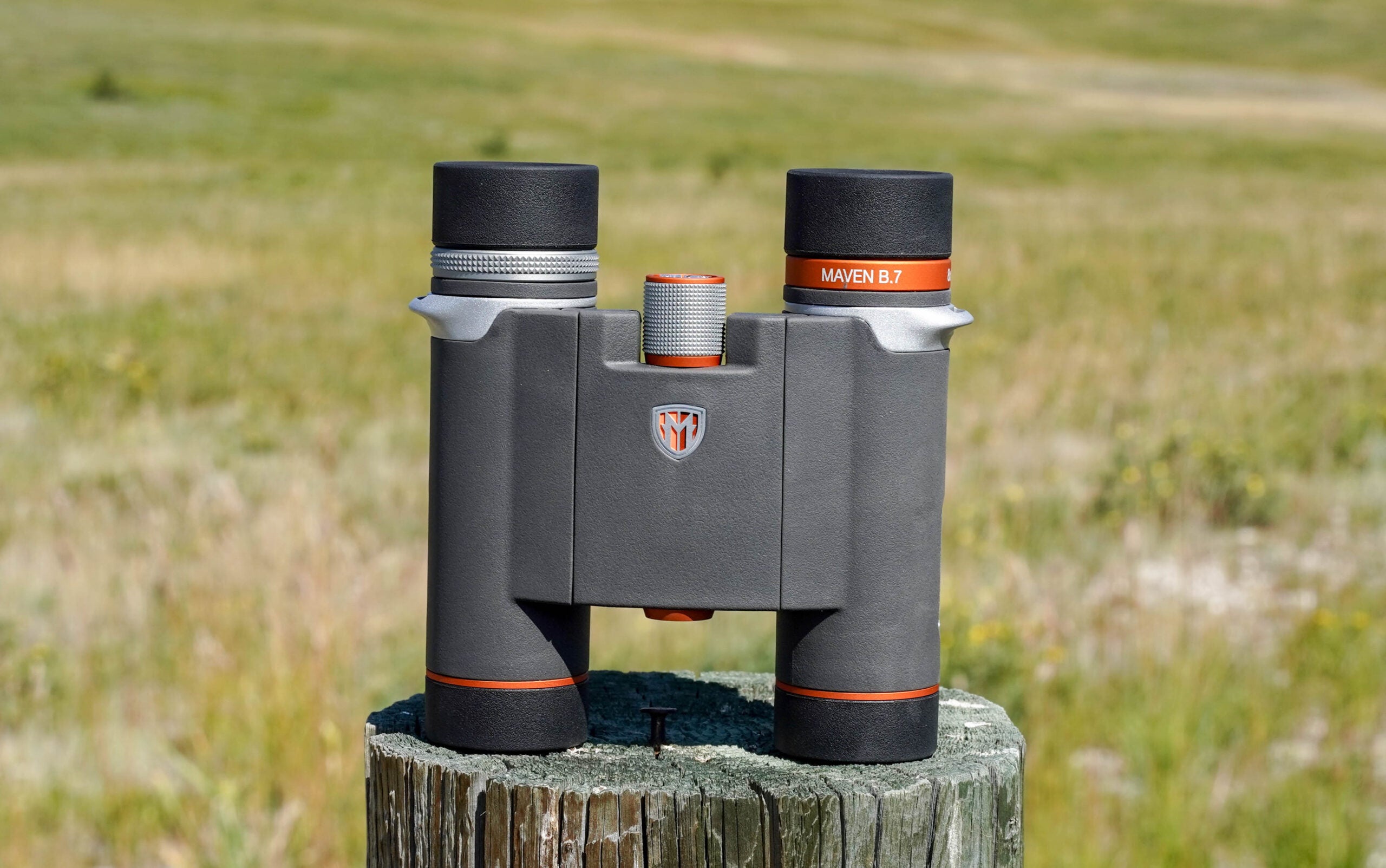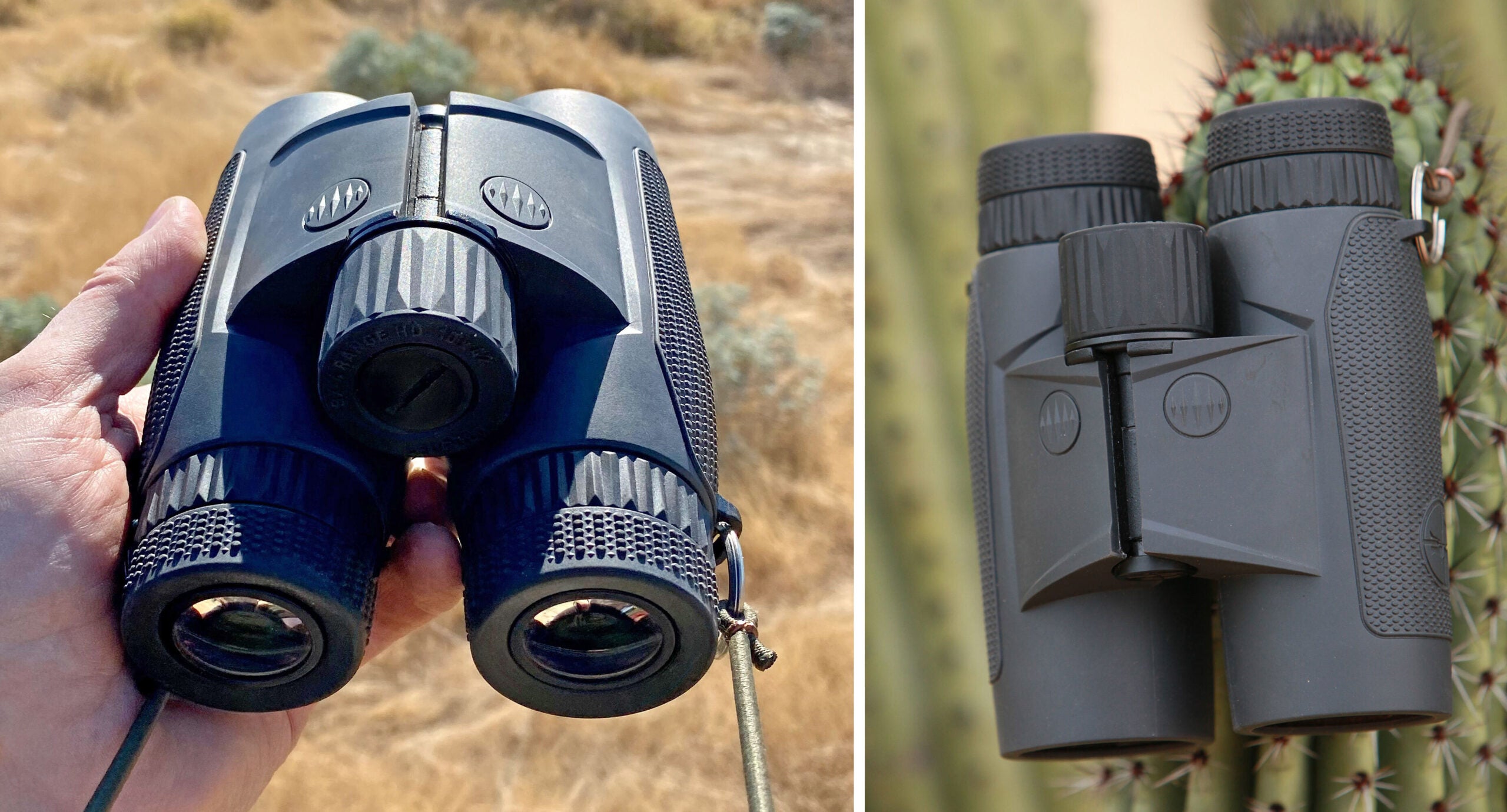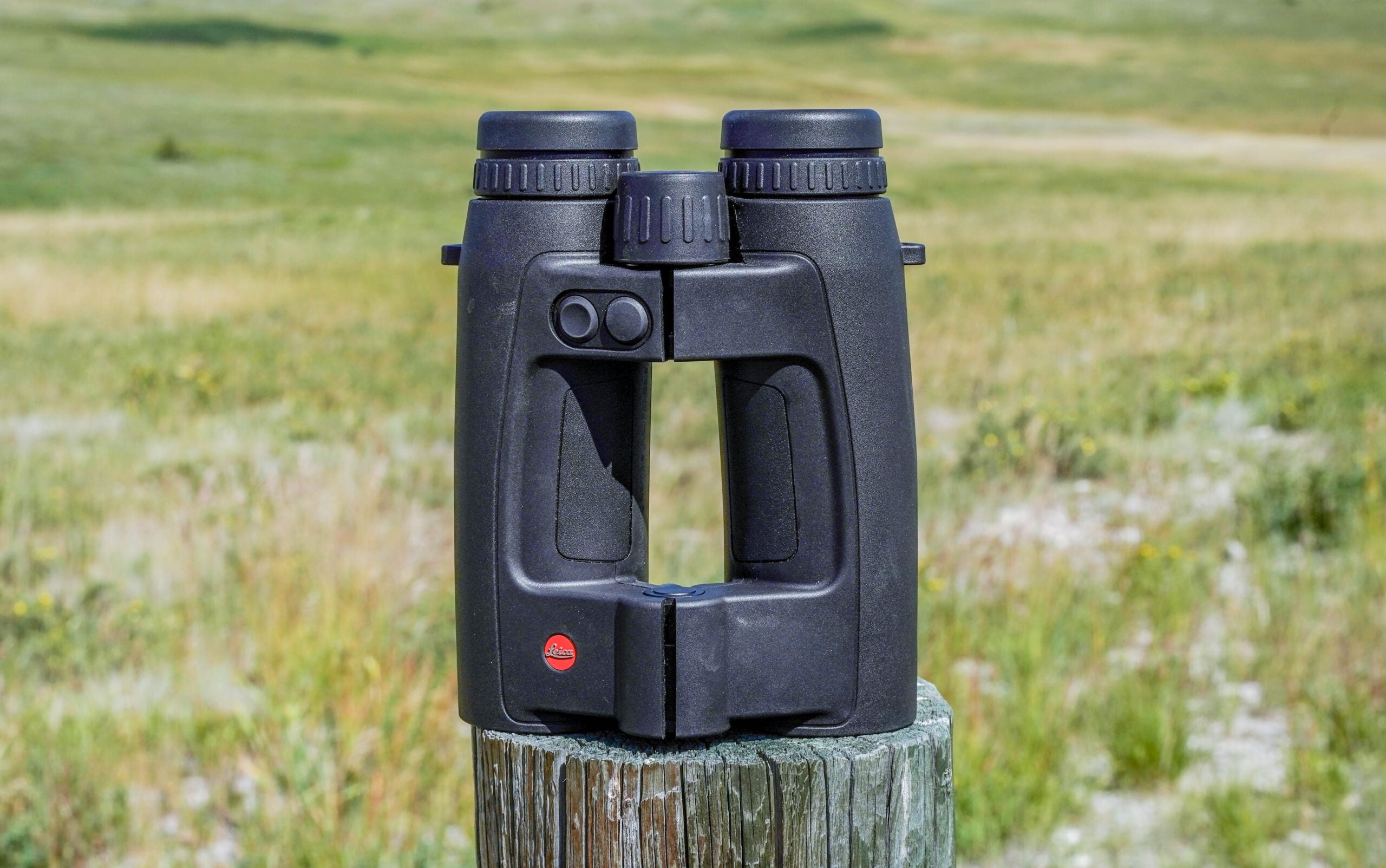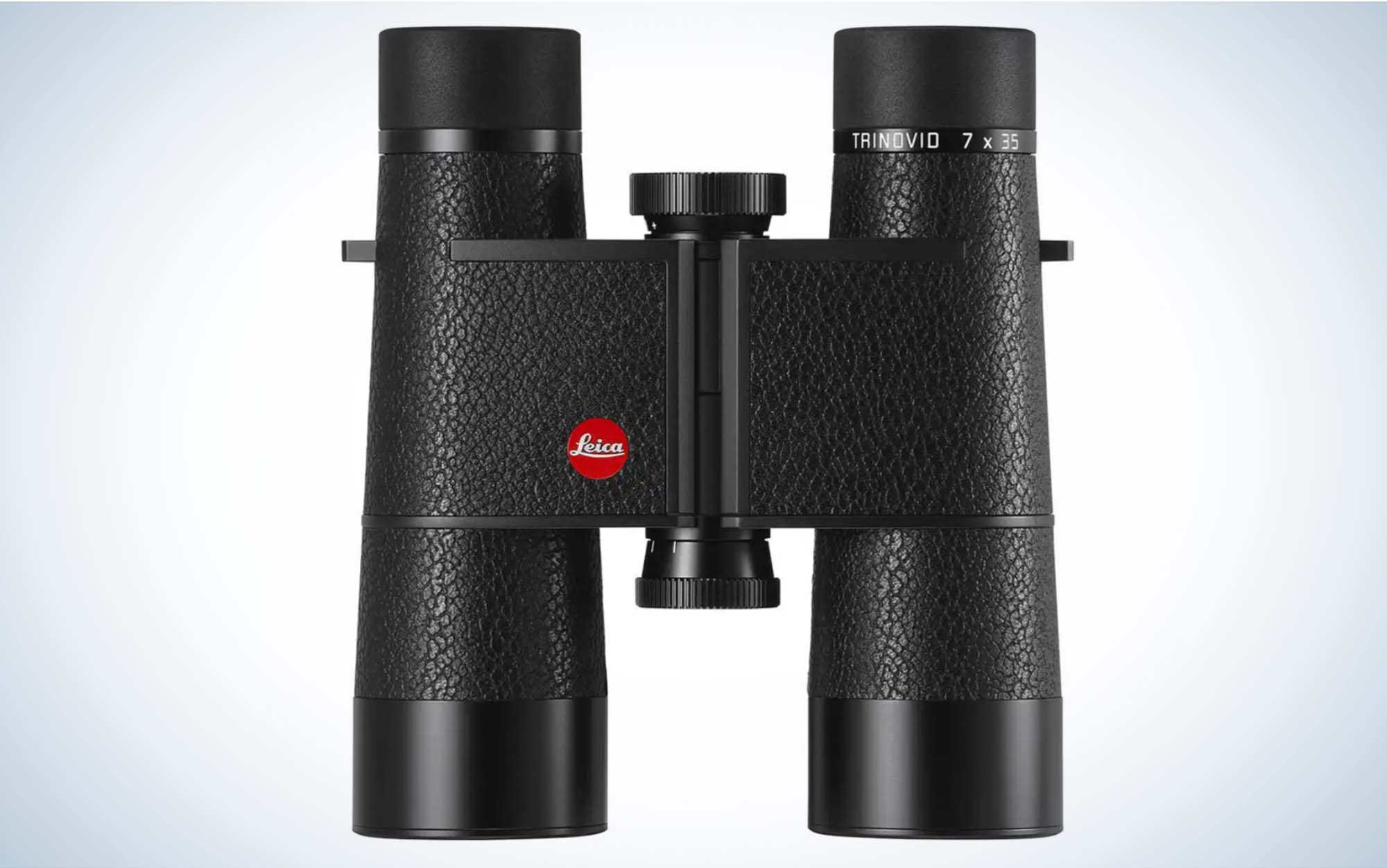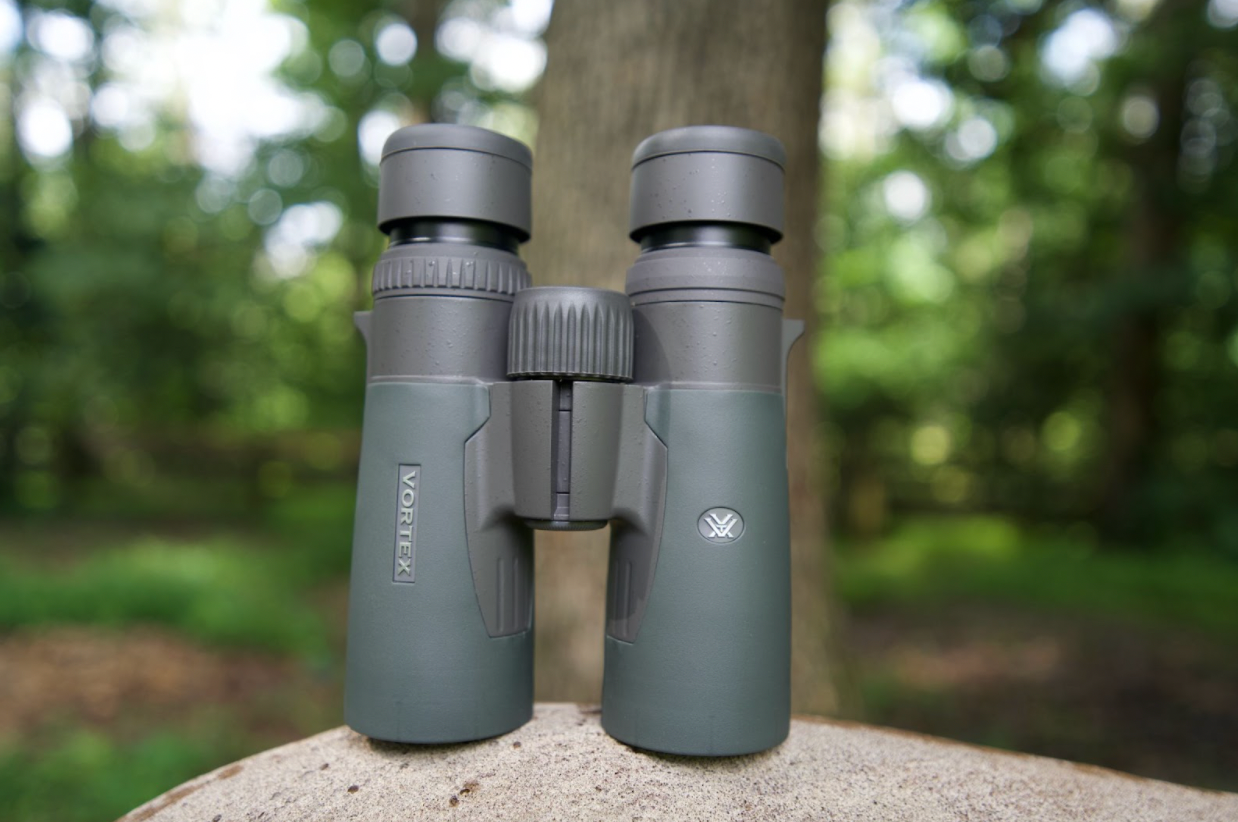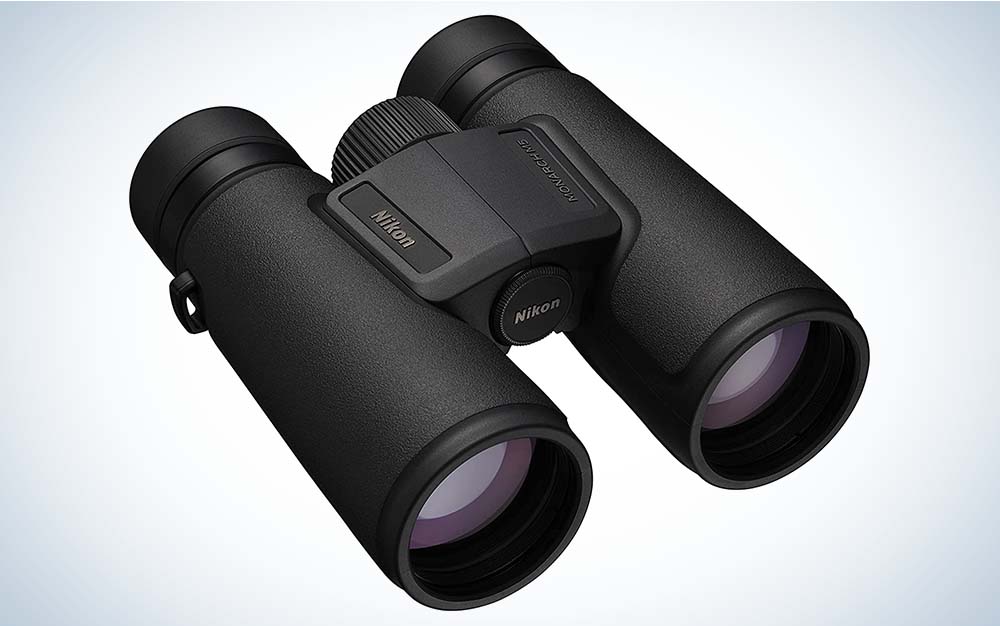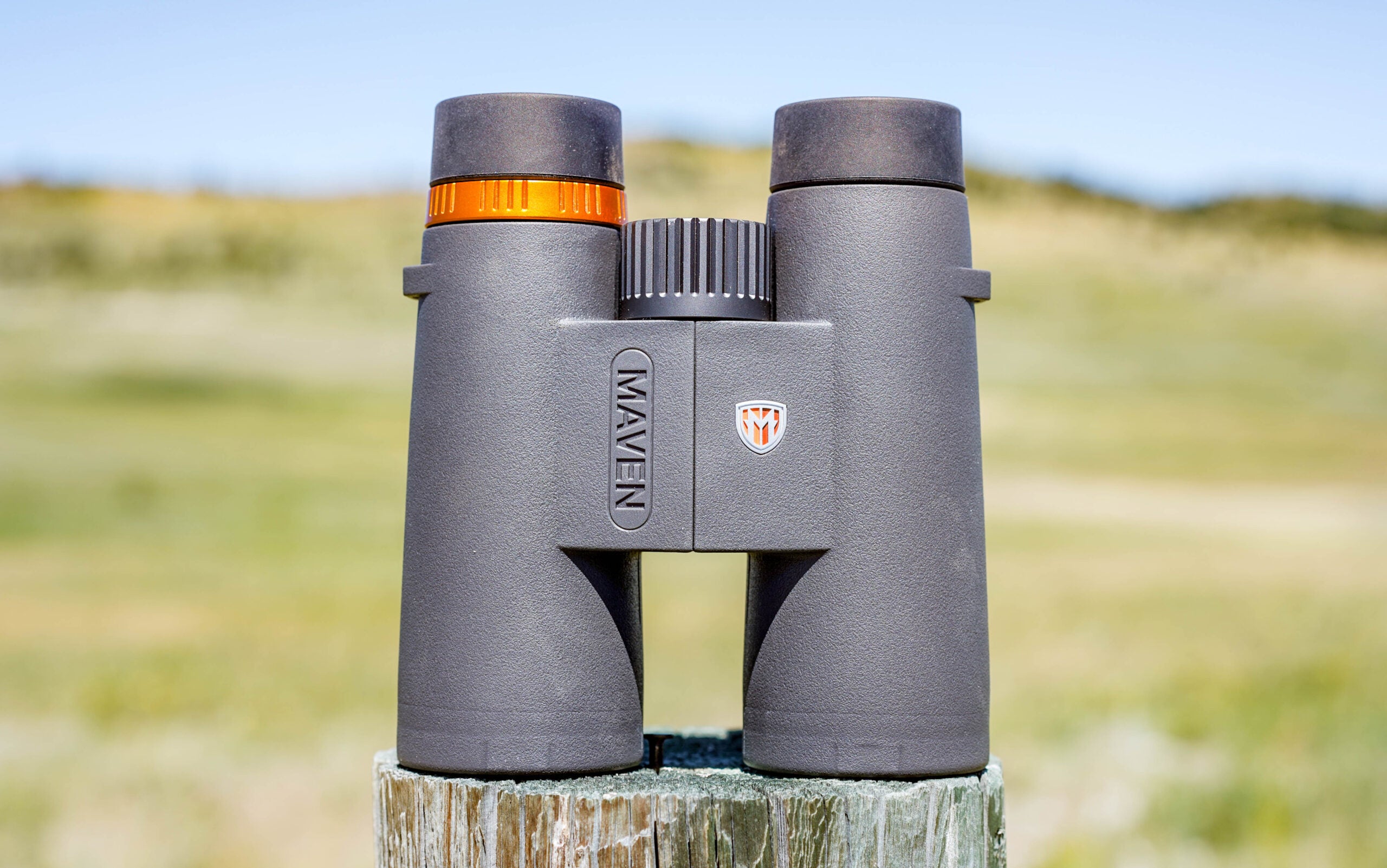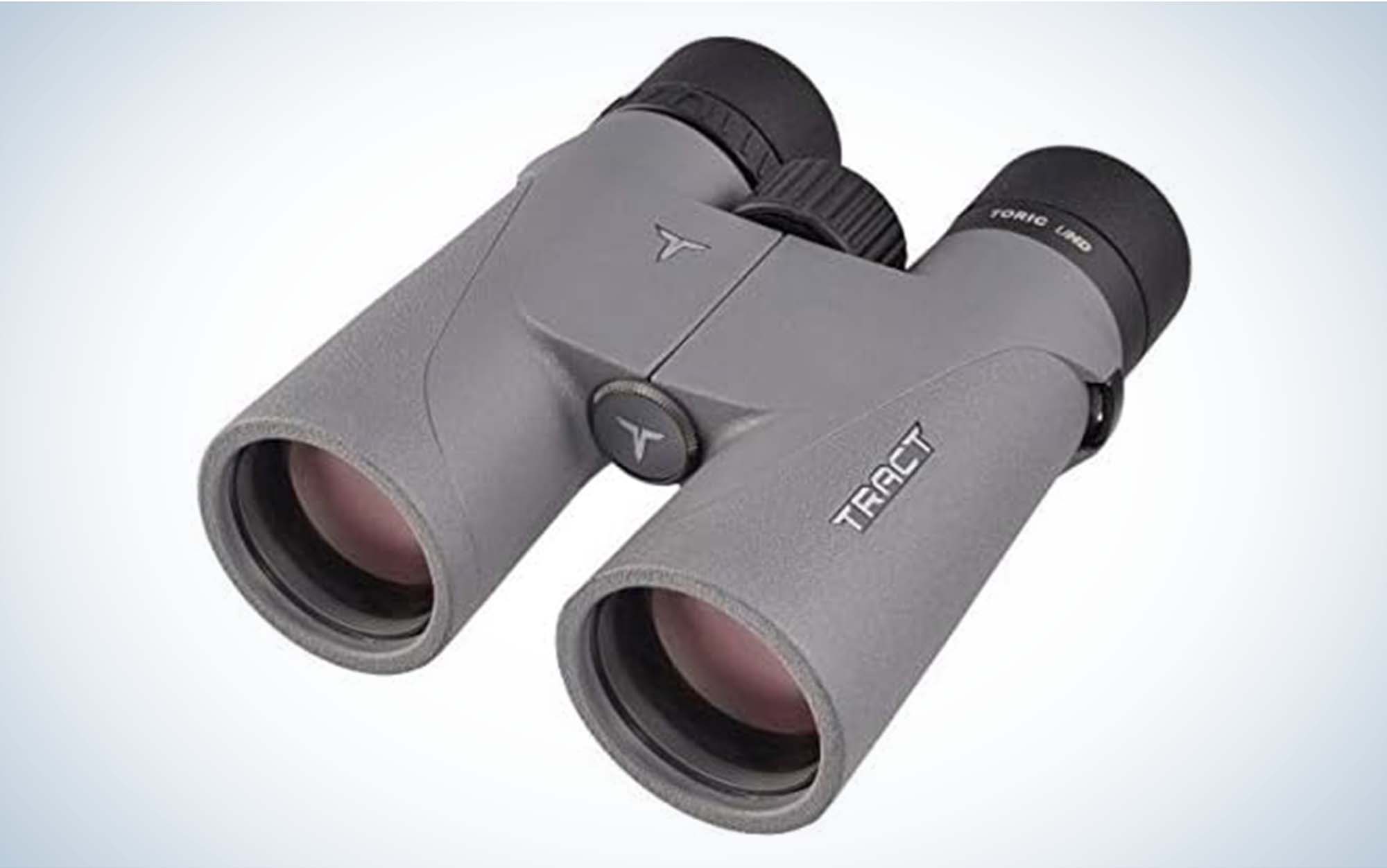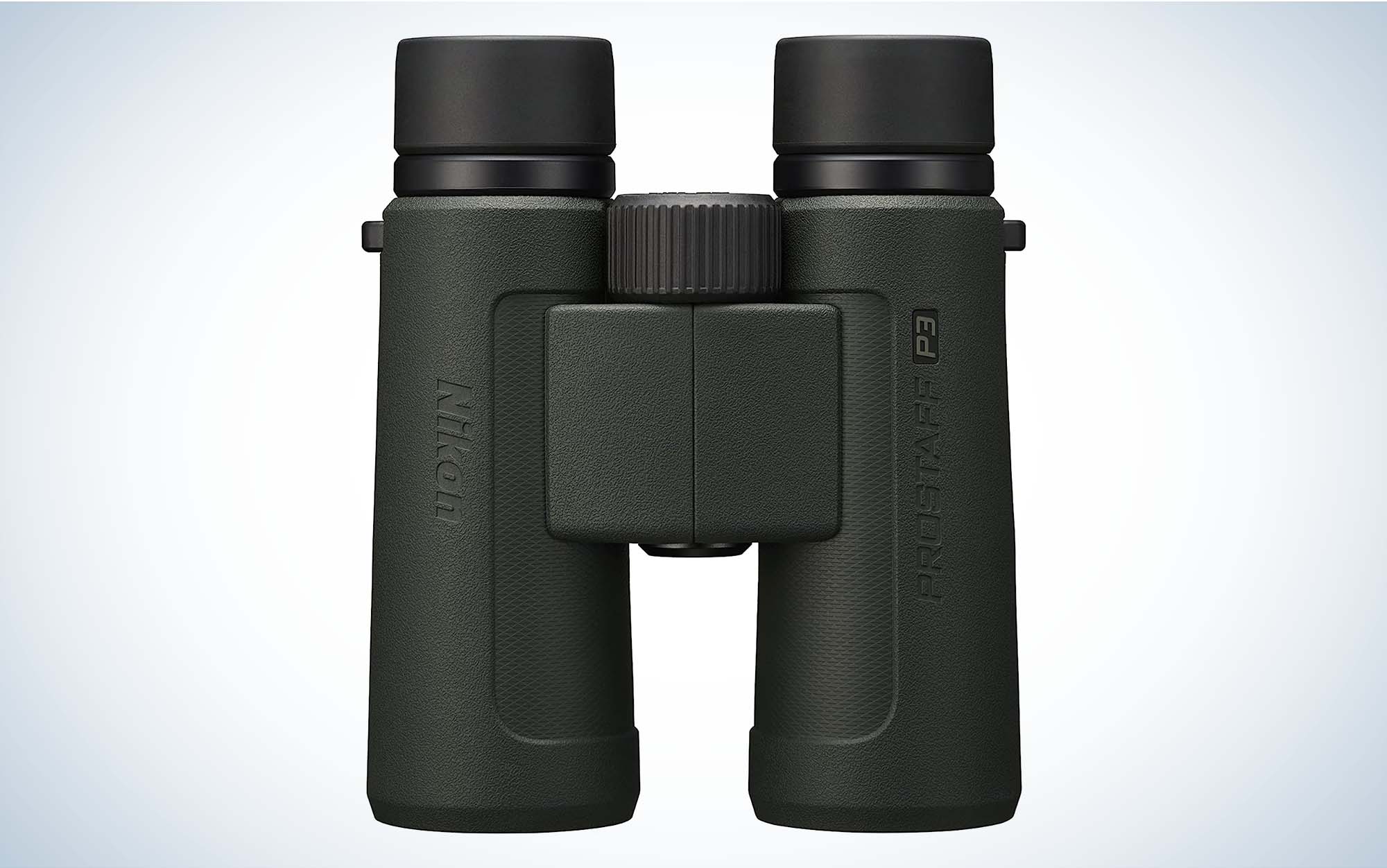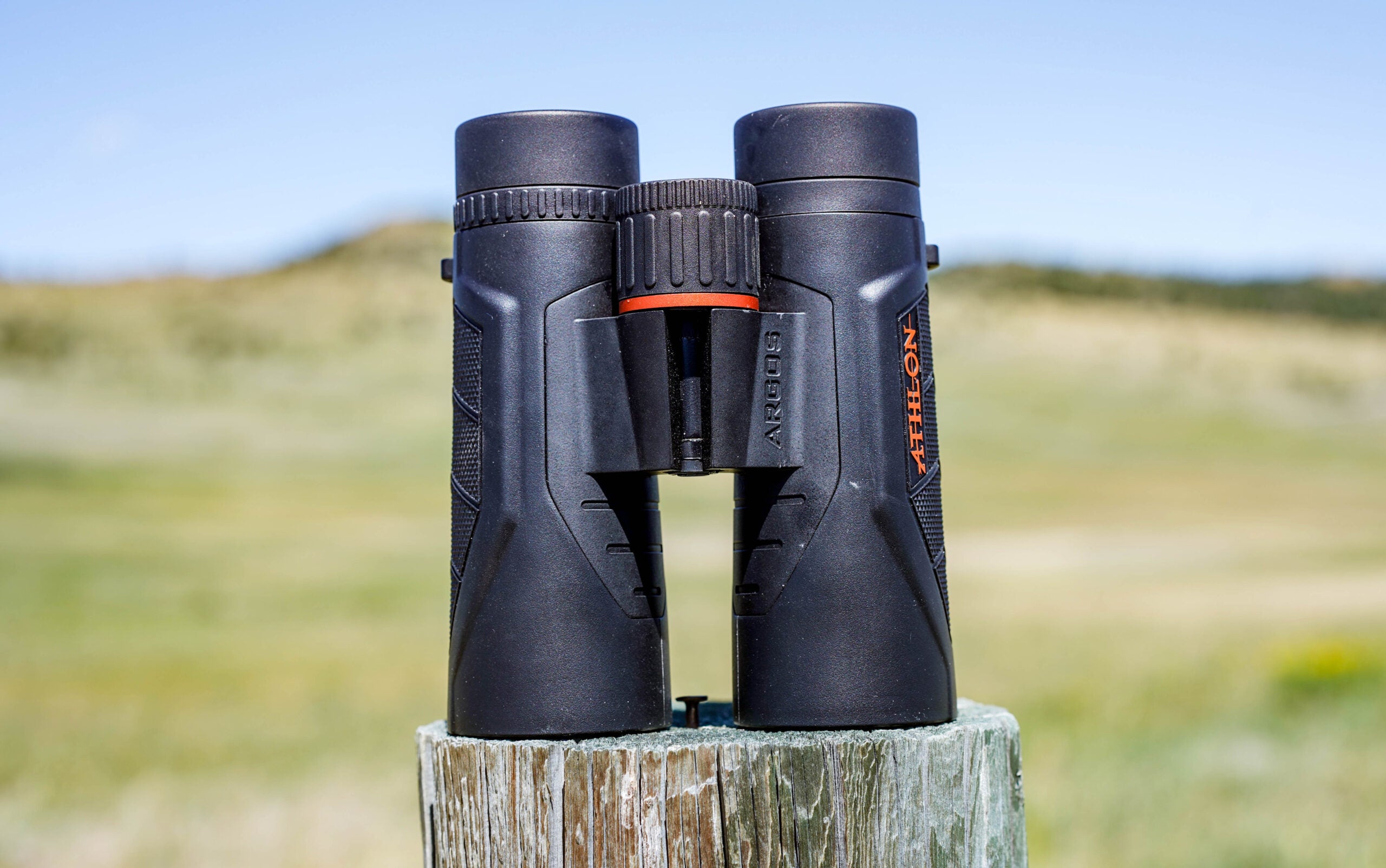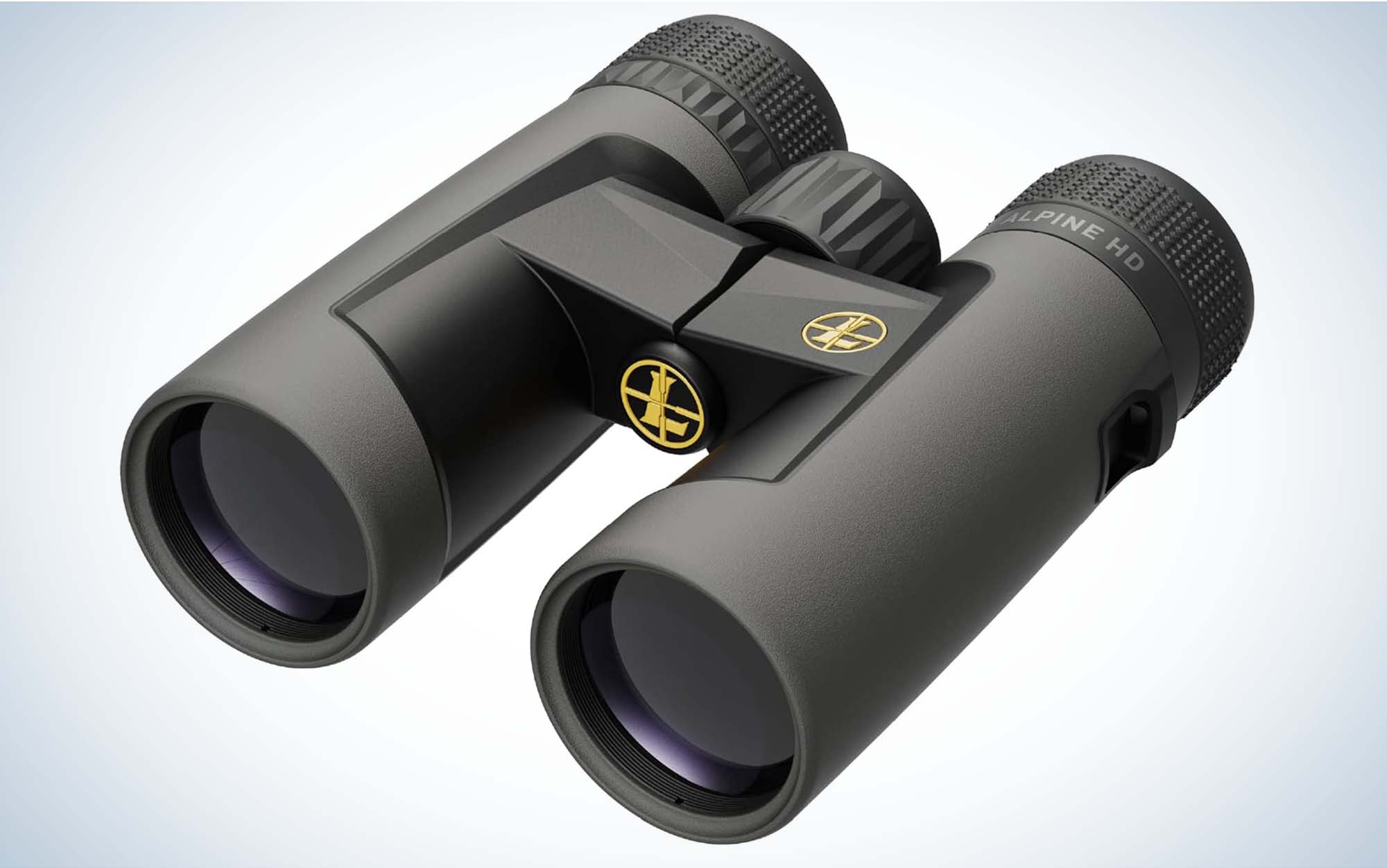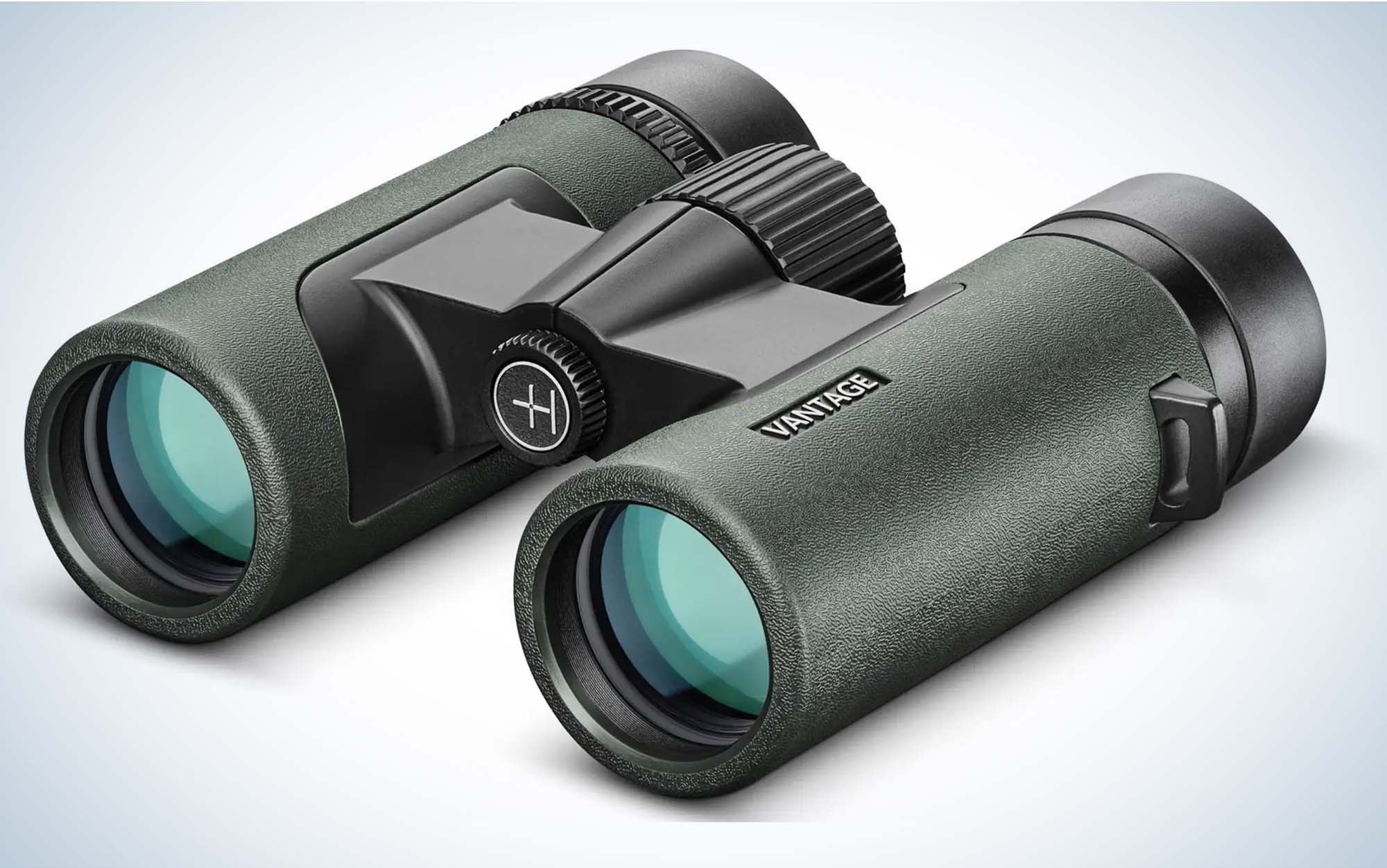The Best Binoculars of 2023, Tested and Reviewed
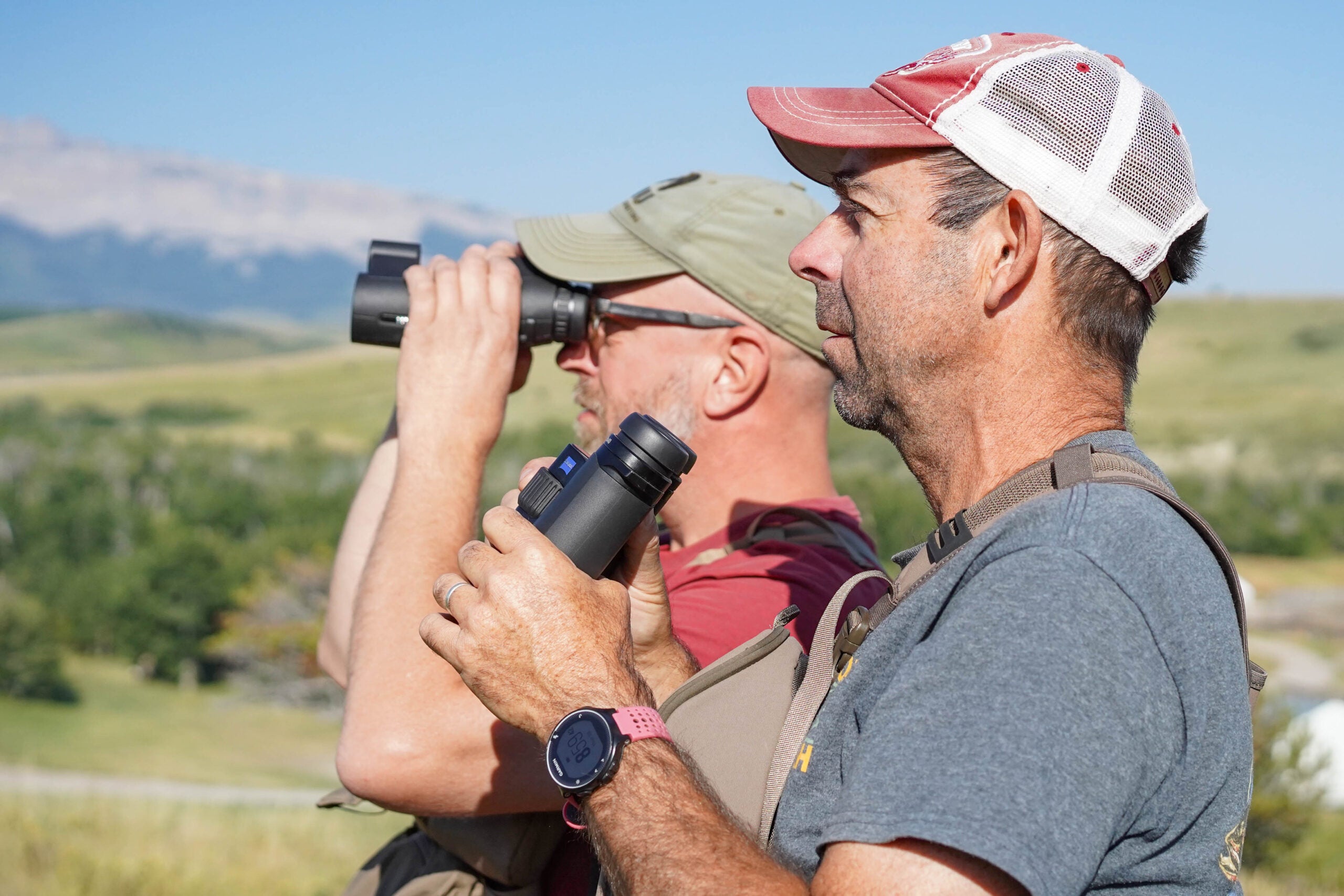
We may earn revenue from the products available on this page and participate in affiliate programs. Learn More ›
Even after peering through thousands of models, binoculars still amaze me with their magical capability to reveal hidden worlds. How else can you describe the knowledge you gain by viewing and identifying a distant bird, but also notice fine details in its plumage and expression?
For hunters, a good binocular will save many miles of hiking, owing to its ability to compress distance and verify if that far-away buck is worth the walk.
Binoculars belong in every pickup truck console, kitchen window sill, and around every hiker’s neck in order to positively identify distant objects, inspect close-up insects (and sometimes the fine print on roadside history signs), and to make your world larger, wider, and more interesting.
While binoculars share many attributes—parallel magnified tubes governed by a common focus control—they’re more different than their generic appearance might suggest, and their wide variation complicates buying decisions. Do you prioritize magnification, or field of view? Do you want a durable closed-bridge bino, or a more nimble open-barreled design? Do you need an integrated laser rangefinder, or is low-light capability more important to you?
This review is designed to help you answer those questions in order to find the best binocular for your specific combination of use, mobility, and budget.
- Best for Birdwatching: Zeiss SFL 8×40
- Best Premium: Swarovski NL Pure 12×42
- Best Compact: Maven B.7 8×25
- Best Budget: Vortex Triumph HD 10×42
- Best Rangefinding Binocular: Leupold BX-4 Range 10×42
- Best Ballistic Rangefinding Binocular: Leica Geovid Pro 10×42
- Best Travel Binocular: Leica Trinovid 7×35
- Best 10×42: Vortex Razor HD 10×42
- Nikon Monarch M5 8×42
- Best Mid-Priced Binocular: Tract Toric UHD 10×42
- Best for Stargazing: Nikon Prostaff P3 10×42
- Best Truck Binocular: Athlon Argos G2 UHD 10×42
- Leupold Alpine HD 10×42
- Hawke Vantage 8×32
How We Tested the Best Binoculars
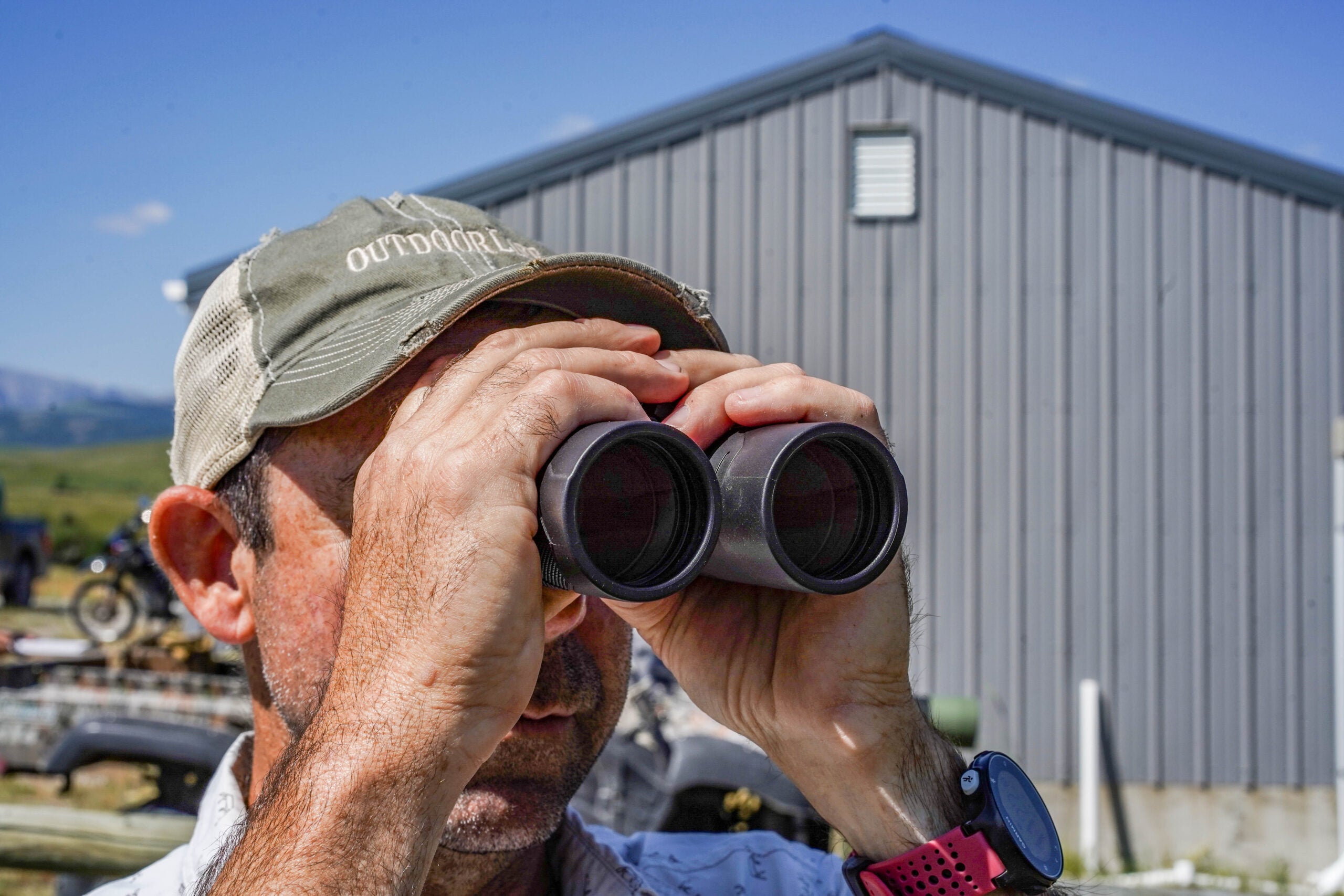
We put all submissions to our annual binocular test through the same criteria. First, we measure optical resolution, using the diminishing black-and-white lines of a 1951 Air Force Resolution Target to score the optical performance of each submission. We also measure the low-light performance of each binocular by mounting them to tripods and focusing them as a group at 200 yards at a black-and-white resolution target starting at twilight and then well into the gathering dark, all in order to measure the brightness of the glass. This is an important consideration for both hunters and wildlife watchers, since animals are more visible in the early morning and late evening than at any other time.
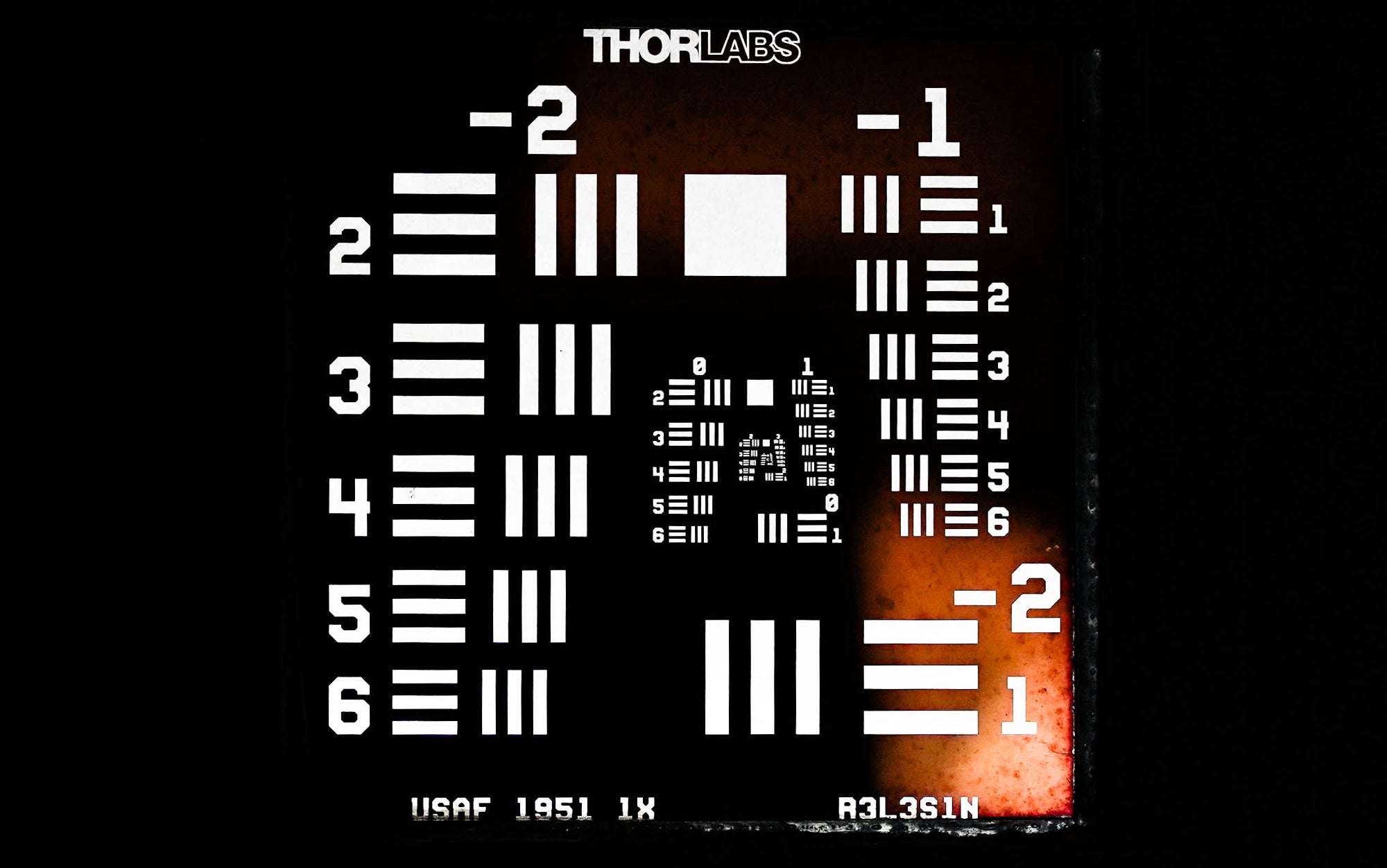
The binocular that can “see” the longest into the dark gets top marks. The model that loses its night vision earliest gets the lowest score. Binoculars in the middle receive weighted scores somewhere between those two poles. We averaged the results over at least three nights, with a different pair of eyeballs behind the binoculars each night, to arrive at our adjusted score.
How We Scored the Results
We break our 10-point scoring into four general categories: optical performance, mechanical performance, design, and value. The average of these categories is the basis of our grades, detailed below.
Optical performance includes the resolution and low-light tests plus the more subjective assessments of image quality and brightness. Mechanical performance assesses the durability of the submission along with its controls: focus and diopter controls, eyecup extension, and comfort. In the case of rangefinding binoculars, it also factors the electronic interface and performance. Design considers the exterior finish, interior blacking, tripod mount, and its innovation and versatility, along with its comfort. We ask testers to evaluate this critical question: how long could you glass with this binocular?
And then our price/value score rates how much optic—along with warranty and amenities such as carrying case or harness—you get for your money. The binocular that gets the highest overall score wins our Editor’s Choice award for the best in the category; the optic with the highest price/value score wins our Great Buy recognition.
For some members of this roundup of binoculars, we are using test results from previous years, but we tested most of these entries in our big 2023 test of binoculars for hunting, budget binoculars, and rangefinding binoculars.
Our 10-point evaluation adds up to a total numeric score, but we translate those to grades for each submission. Our Optical performance grade combines the scores from resolution, low light, image, and brightness. Our mechanical performance grade aggregates the mechanics and durability score. The design grade considers construction, innovation, versatility, and comfort. And then the price/value grade is our value grade.
To earn an “Excellent” grade, the average of that category must be 9 or higher, which is extremely hard to achieve. “Very Good” is an average score of 7 to 9. A “Good” grade is 5 to 7. Our “Fair” grade is 3 to 5, and “Poor” is anything under 3.
The Best Binoculars: Reviews and Recommendations
Best for Birdwatching: Zeiss SFL 8×40
Scott Einsmann
Score Card
- Optical Performance: Very Good
- Mechanical Performance: Excellent
- Design: Excellent
- Price/Value: Very Good
Key Features
- Double-hinge, open-barrel design
- Right-barrel diopter control
- Oversized focus wheel
- 4.9-foot close focus
- Weight: 22.6 ounces
- SmartFocus wheel zooms from close focus to infinity in 1.4 turns
- Also available in 10×40, 8×30, and 10×30 models
Pros
- DoubleLink Bridge enables good barrel grip
- Premium glass and coatings
- Extremely light weight
Cons
- At $1,500, it’s a pricey binocular
- Straps and case are fairly pedestrian
The world of premium binoculars apparently has no upper limit. You’ll pay over $3,000 for Swarovski’s excellent NL Pure and over two grand for Leica’s stunning Noctovid. Zeiss, too, asks nearly $3,000 for its marvelous Victory SF binoculars. So to find a binocular that performs nearly on par with those flagship models for half the price is worth shouting about.
Zeiss saves some money on its SFL model by importing this model from Japan; most of the brand’s super-premium optics are made in either Germany or Portugal. And it has found some additional savings in glass by using thinner lenses than it uses in its SF line. Those thinner lenses also allow the SFL to shave nearly half a pound from the SF in the same configuration.
But the image delivered by those halfling lenses is every bit as sharp and vibrant as those of Zeiss’s other premium binoculars. The SFL easily posted the top resolution score at this year’s optics test, and testers raved about the vibrant image with rich contrast and stunning colors. It lost points on disappointing low-light performance, which was partly due to its diminutive 8×40 configuration.
The SFL was designed to appeal to birdwatchers, who are willing to pay for lightweight, bright, and crisp binoculars. But the reason the SFL is here in the top spot is its wider field-worthiness. Its oversized focus wheel riffs from an extremely tight close focus of 4.9 feet out to infinity in just 1.4 rotations of the wheel. That’s a huge asset for tight-cover deer and hog hunters, but also for Western hunters who might pan from middle-distance cover out to far vistas in the same field of view. The smooth and fluid focus wheel moves as though it rides on ball-bearing tracks.
The Zeiss’s name stands for “Smart Focus Lightweight,” and the 1.5-pound heft makes this the lightest premium bino on the market, and a wonderful companion for long hikes over difficult terrain. The balance and grip provided by the open-bridge design makes the SFL feel even lighter, and testers gave high praise for the binocular’s tapered eyecups that were extremely comfortable to use for extended periods.
That’s the real question to ask of a binocular—how long do you want to spend behind it? The more and longer you use a binocular, the more objects—whether warblers or caribou—you’ll spot. There are few other pieces of hunting gear that have that outsized effect on your outcome. If the 8×40 isn’t for you, look to the SFL in 10×40, 8×30, and 10×30.
Since our binocular test, we have kept reaching for the Zeiss any time we required a binocular, one of the surest signs that it’s an optic worth a long look. And longer possession.
Best Premium: Swarovski NL Pure 12×42
Adam DeMarchi
Score Card
- Optical Performance: Excellent
- Mechanical Performance: Very Good
- Design: Excellent
- Price/Value: Good
Key Features
- Fluorite glass
- Magnesium-alloy chassis
- Short closed-bridge design
- Field-flattener lens system
- Field of View: 339 feet at 1000 yards
- Weight: 29.5 ounces
Pros
- Curved barrels hug hands, minimizing shake
- Positive focus wheel
- Tapered three-position eyecups
- Long eye relief
- Wide field of view
Cons
- At about $3,500, wildly expensive
Swarovski’s NL Pure might well be the perfect binocular. The hourglass curves of its shapely barrels grip your hands, creating a rock-solid support for glassing, even with the 12-power model. The field-flattener lenses create a picture-window view of the world. And the immense field of view—among the widest in the business—gives you a lot to look at.
As might be expected, Swarovski brings its best class of glass—a fluorite recipe that tames aberrant light and intensifies colors and depth—to the NL Pure, which is also available in 8×32, 8×42, 10×32, and 10×42 versions. But if the stunning image gets your attention, the mannerly controls keep you glassing. The oversized focus wheel is located within easy reach of index fingers and turns with cool precision, and the elegantly tapered eyecups fit most brows comfortably. The open-barrel design is a cinch to use with a single hand.
In short, the NL Pure is a joy to use for extended periods, which is one of the best attributes of a premium hunting binocular. Swarovski offers a very useful forehead rest that mates with the NL Pure, and when the binocular is mounted to a tripod, it creates rock-solid contact with the optic, allowing the binocular to act as a spotting scope with a wide field of view.
All this performance comes at a price, and in the case of the NL Pure, that price is well north of $3,000. That stratospheric cost puts it out of reach of most mortals, and it also serves to make it a little too precious to use in hard-core field situations, where optics are in danger of getting scratched, dented, stolen, and abused.
If you have the funds, then the Swarovski NL Pure is an investment-grade product, worth buying now in order to use while you can, but then to hand down to future viewers who will appreciate European optics inside a field-worthy chassis.
Read Next: Best Binocular Harnesses
Best Compact: Maven B.7 8×25
Scott Einsmann
Score Card
- Optical Performance: Good
- Mechanical Performance: Very Good
- Design: Very Good
- Price/Value: Good
Key Features
- Double-hinge, closed-bridge design
- Right-barrel diopter control
- Extra-low-dispersion glass
- Extremely compact design
- Also available in 10×24
- Weight: 12.4 ounces
Pros
- Highly textured focus and diopter controls
- Excellent treestand or turkey-vest optic
- Distinctive orange accents
Cons
- Too small for open-country glassing
- Controls hard to manipulate with gloves
With this petite binocular, introduced earlier this year, Maven is well on its way to filling out its product line. The B.7 is a compact version of the direct-to-consumer company’s excellent B.3 line.
It should be said at the outset that this is a fairly specialized optic. It’s configured for portability and use in tight quarters and in close ranges. Think whitetail hunting out of a treestand. A travel optic when weight and space is at a premium. Turkey hunting just about anywhere. I use sub-compact binoculars when upland hunting, tucked in a pocket of my upland-bird vest, in order to positively identify distant birds, to find my dog, or confirm a distant point.

The Maven is one of the best-rendered versions of this class of diminutive binocular. The double-hinge design allows the barrels to nest under the bridge, and can fit inside a roomie shirt pocket. The glass is surprisingly good for this mini optic. Maven uses extra-low-dispersion glass that reduces glare and boosts colors and contrast of images, and helped the B.7 post one of the best resolution scores of our 2023 binocular class. But the ED glass is also responsible for the fairly steep price; the 8-power B.7 retails for $600; the 10-power version sells for $625.
Outdoor Life’s optics test team gave the binocular good price/value scores, and they praised the solid build and responsive controls. But several testers noted the limitations of the platform.
“This would be a good spot-and-stalk bino for those times when I don’t want to carry a pack or even a binocular harness,” said tester Ky Idler. Tester Dale Manning further noted that the B.7 would “make a great optic for sporting events, turkey hunting, deep-woods treestand hunting, but for me it’s too small to be a go-to field bino.”
Fair enough, but for those hunters looking for a combination of outsized optical performance in a very trim package, this binocular fits just about anywhere.
Best Budget: Vortex Triumph HD 10×42
Scott Einsmann
Score Card
- Optical Performance: Fair
- Mechanical Performance: Good
- Design: Good
- Price/Value: Very Good
Key Features
- Single-hinge, closed-bridge design
- Roof-prism design
- Right-barrel diopter control
- Fully transferable lifetime warranty
- Tripod adaptable
- Weight: 22.9 ounces
Pros
- Ships with excellent GlassPak harness
- Extremely accessible real-world street price of under $100
Cons
- Significant peripheral distortion
- Flimsy feeling
How on earth can Vortex bring a capable binocular to the masses for under $100? With a premium harness and the brand’s legendary warranty? Those were questions our test team batted around as we handled this brand-new entry-level binocular. Then we got behind the lenses and learned some of the answers.
The biggest answer is the class of glass inside the new Triumph HD is cheap and wincey. The Vortex received uniformly downbeat assessments in optical performance; it scored near the bottom in low-light brightness, and its resolution score was just below the median. Testers further complained about blue color fringing, noticeable edge distortion, and blurry focus.
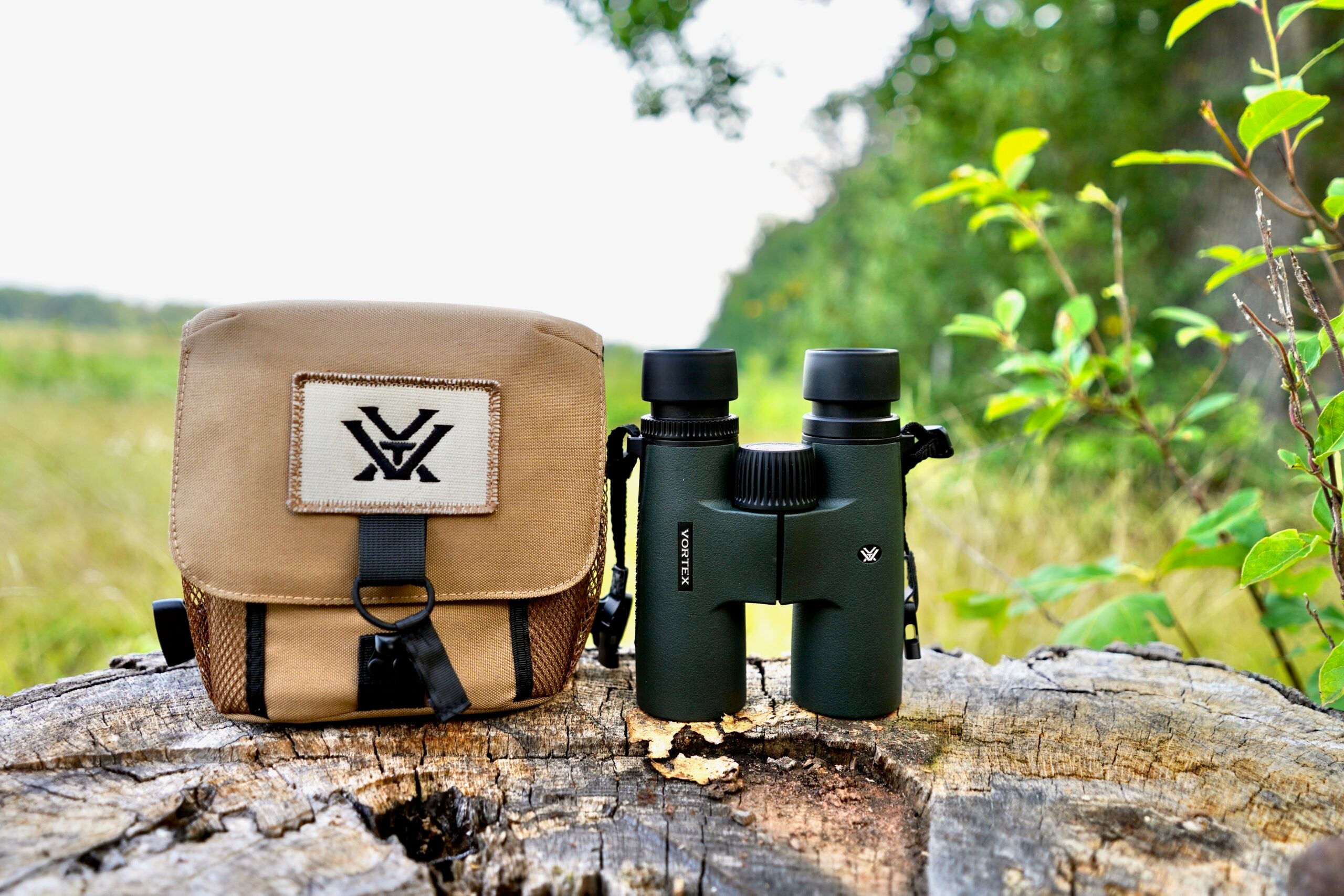
But we also recognized that you shouldn’t expect world-beating glass inside a $99 binocular, and that same realism pervaded our assessment of the Triumph’s mechanical performance. The diopter adjustment is stickier than we’d like, and the overall build feels flimsy. But the tapered eyecups move with positivity and the focus wheel is tight and responsive. The texturing, balance, and overall design is better than we’d expect for the price.
On the value side of the ledger, the GlassPak case and integrated harness confirms the Great Buy designation we gave the Triumph HD. This would make a very good first optic for a hunter, birder, or shooter, and if treated gently is a good choice to throw in a pickup or cabin. We’re not sure how much rough handling this bino can take, but Vortex’s excellent warranty and customer service is a cheering consolation.
Read our full Vortex Triumph HD review to learn more.
Best Rangefinding Binocular: Leupold BX-4 Range 10×42
Andrew McKean
Score Card
- Optical Performance: Good
- Mechanical Performance: Very Good
- Design: Good
- Price/Value: Very Good
Key Features
- Ambidextrous ranging button
- 2,600-yard ranging capability
- Uses Leupold’s wind and ranging engines
- 12-yard minimum range
- Tripod adaptable
- Loaded with 25 ballistic groups
- Weight: 39 ounces
Pros
- Fast laser processor
- Employs Leupold’s True Ballistic Range/Wind tech
Cons
- No Bluetooth connectivity to an app
- Square, brick-like hand feel
Because this is a review of binoculars that appeal to a wide range of users, and not just hunters, the idea of incorporating a laser rangefinder inside a traditional binocular may cause some confusion. But if you open your mind, the application of rangefinding has no limits. Say you’re a birdwatcher who wants to know just how close you got to that peregrine falcon. The Leupold gives you the answer. Or maybe you’re a biologist who needs to know the specific distance between camera trap and bait site. The Leupold will easily calculate the answer.
What makes the BX-4 Range worth including in this review of essential binoculars is that it brings excellent optics, solid durability, and smart functionality to the category. The LRF bino is an impressive confluence of the brand’s far-ranging talents with both field optics and rangefinding electronics. The BX-4 Range binocular borrows from Leupold’s software that combines its long line of laser rangefinding monoculars with very good binocular optics.
The BX-4 Range is not without faults. It’s approximately the size and weight of a brick, with similar angular contours. Its eyecups are square and uncomfortable. And the Leupold’s ranging talents are relatively unimpressive. The BX-4 bucks the trend in precision shooting circles by omitting Bluetooth connectivity to a mobile ballistic app, and it doesn’t have sophisticated (and expensive) on-board environmental sensors that help direct bullets. Instead, it has a simple and useful laser rangefinder that ranges from 12 to 2,600 yards.
The Leupold has very good optics, though because rangefinders use an additional lens element for the ranging beam-splitter, and because coatings are tuned to make the red OLED display pop, the optics aren’t quite as clear and crisp as a binocular without the electronics. And at about $1,600, the BX-4 Range is a relative bargain, providing users with a capable rangefinder and a very good binocular. When you add Leupold’s excellent warranty and customer service, the BX-4 makes the case as a serious and useful field companion.
Read Next: Best Rangefinder Binoculars
Best Ballistic Rangefinding Binocular: Leica Geovid Pro 10×42
Scott Einsmann
Score Card
- Optical Performance: Very Good
- Mechanical Performance: Excellent
- Design: Excellent
- Price/Value: Good
Key Features
- Premium glass
- Laser ranging to 3,000 yards
- Pre-installed Applied Ballistic Ultralight software
- Double-hinge, open-bridge design
- On-board environmental sensors
- Rugged magnesium chassis
- Also available in 8×32, 10×32, 8×42, and 8×56 versions
- Weight: 34.2 ounces
Pros
- GPS-enabled tracking aid
- Wide field of view
- Custom ballistic profiles available through Bluetooth
- Connects to mobile app and Kestrel devices
Cons
- High and long learning curve
- At about $3,300, very expensive
- At over 2 pounds, it’s a unit
If Leupold’s new BX-4 Range is the perfect rangefinding binocular for hunters, and Sig’s phenomenal KILO10K is a must-have optic for long-range shooters, then the Leica Geovid Pro 42 is a unit that brings its talents to both walk-about hunters and hard-core precision shooters. This European high-performance optic has so much under the hood that it can take an entire hunting and competition season to unlock its capabilities.
Want a very precise laser rangefinder that offers aiming prescriptions for your specific custom rifle load? The Geovid Pro 42 will deliver it by connecting to Leica’s excellent Leica Ballistics App 2.0. Or maybe you want best-in-class glass to make a low-light shot? Leica’s very good glass and optical design delivers. Or maybe you want to know where that animal was when you took your shot? The GPS-enabled mapping service pairs with your mobile phone to show you precisely where to begin tracking.
The unit also pairs with Kestrel devices to get real-time wind direction and speed updates, and the on-board software calculates windage holds based on that information. The software also calculates angle of the shot, air pressure, temperature, and altitude, essentially giving you super powers as a lethal shot, whether at game animals or at steel plates.
The 42mm version of the Geovid Pro is new for this year; the inaugural version of the platform debuted in a 10×32 configuration last year. The 10×42 is relatively boxy and hefty, tipping the scales at a little over 2 pounds. For most hunting situations where I might need all the laser rangefinding capabilities the platform delivers, extreme backcountry hunts in rigorous terrain, I’d probably opt for the trimmer 10×32. But with better field of view and low-light performance plus all the precision-shooting capabilities of the 32mm Geovid, the 42mm unit represents a gargantuan achievement in the integration of electronics and optics.
Best Travel Binocular: Leica Trinovid 7×35
Leica
Score Card
- Optical Performance: Excellent
- Mechanical Performance: Very Good
- Design: Very Good
- Price/Value: Good
Key Features
- Hand-fitting design
- Premium glass
- Lightweight aluminum chassis
- Elegant retro design
- Tactile leather trim
- 4-position retractable eyecups
Pros
- Timeless design
- Compact and portable
- Tapered three-position eyecups
- 21 ounces
Cons
- At about $1,500, pricey for a “compact” binocular
- Square and stiff in-hand feel
This is the binocular to carry if you ever find yourself inside the Vienna Opera House without an optic. Or if you need to scan the Russian steppes aboard the Orient Express. It’s so classically stylish that it wouldn’t be out of place at the Coachella Festival or at a Taylor Swift concert, in order to parse those costume details you couldn’t see with your eyes or your iPhone.
The Trinovid is also well-suited to the field. The 7-power magnification gives the mid-sized binocular a pleasing field of view and decent range. The 35mm objective fits nicely between the 32mm compacts and the 42mm full-sized units, giving the Leica points for portability and versatility. The leather appointments give the binocular great grip, and the centered focus wheel is easy to operate with a single hand.
If you’re looking for a binocular that can transition from the dusty prairies of Wyoming’s pronghorn patch to the lido deck of a Mediterranean cruise ship, this is one of the few optics in our experience that can handle both chores with style, capability, and charm.
Best 10×42: Vortex Razor HD 10×42
Score Card
- Optical Performance: Very Good
- Mechanical Performance: Very Good
- Design: Very Good
- Price/Value: Good
Key Features
- Single-hinge, open-barrel design
- Right-barrel diopter control
- Oversized focus wheel
- Oversized eyecups
- Also available in 12×50, 8×42, and 10×50 models
Pros
- Nicely balanced
- Excellent class of glass
- One-hand operation
- Excellent warranty and customer service
- Ships with binocular harness
Cons
- At about $1,200, a fairly pricey binocular
- Untextured barrels can become slick
The best thing that can be said about a binocular is that it makes the world appear larger than it is, by delivering to the eye an image that’s bright, colorful, and vibrant. The Razor HD does all that, but what’s more important for hunters, birdwatchers, and hikers is that it does it with a wonderfully useful design that is easy to deploy with one hand.
The grippy open-barrel design is fast and nimble, but what makes the Vortex especially responsive is its highly textured, ergonomic focus wheel, which is an easy reach for a fingertip. That’s a valuable asset for bowhunters or any user whose other hand is occupied with holding a tripod or camera or the hand of a companion. The Razor HD further endears itself with its extremely large and accommodating eyecups and eyeboxes, which are not only comfortable against your brow but also enable extended glassing sessions.
The Razor HD is the best example we’ve seen of what the industry calls HD, or high-definition, glass. That’s a relatively meaningless term, but the glass that powers the Razor HD is on another level from most HD or UHD glass. Vortex claims to index-match the lenses in order to balance their performance, and the coatings further boost color fidelity and contrast.
With a price tag well over $1,000, this is a serious investment, but Vortex softens the hit by including a premium GlassPak binocular case and harness with the Razor HD. And the company’s legendary no-questions-asked warranty further makes the case for the Vortex not only as a hearty companion in the field, but as a good investment.
Nikon Monarch M5 8×42
Nikon
Score Card
- Optical Performance: Good
- Mechanical Performance: Good
- Design: Very Good
- Price/Value: Very Good
Key Features
- Closed-bridge, roof prism design
- Right-barrel diopter control
- Fiberglass-reinforced polycarbonate resin body
- Premium glass and coatings
- Tripod adaptable
- Non-transferable lifetime warranty
Pros
- Extra-low-dispersion glass in objective lenses
- 8.2-foot close focus
- Wide field of view
- Very light weight (22.2 ounces)
- Appealing price, under $150
Cons
- Spongy focus
- Poor low-light performance
Nikon seems to have an inexhaustible supply of appealing price-point binoculars. The Monarch M5, which we evaluated in our 2023 test, continues that trend. It brings very good glass for the price, and the coatings and controls are of a quality you’d expect from a binocular that costs several times the Monarch M5’s price point, which is under $150.
Introduced this year, the Monarch M5 posted one of the best resolution scores in our budget bino test, and testers noted a pleasing image free from distracting flaring and distortion, again an exception for a budget bino. The Nikon disappointed in our low-light test, but its performance may be explained by its 8-power configuration. It’s worth noting that the M5 is also available in 10×42 and 12×42 versions.
In summation, the Nikon Monarch M5 is a solid, fairly priced binocular that would make an excellent first optic for a new hunter or outdoor person, or a reliable backup optic for a pickup or side-by-side.
Maven C.1 8×42
Score Card
- Optical Performance: Very Good
- Mechanical Performance: Good
- Design: Good
- Price/Value: Very Good
Key Features
- Closed-bridge design
- Right-barrel diopter control
- Polymer frame
- Tripod adaptable
- Fully transferable lifetime warranty
Pros
- Distinctive orange accents
- Extra-low-dispersion glass in objective lenses
- Ships with microfiber bag and carry strap
- Also available in 10×42 and 12×42 models
Cons
- At $400, a relatively expensive “budget” binocular
- Eyecup edges unforgivingly hard
In some ways, it was no surprise that this $400 binocular won Outdoor Life’s 2023 budget bino contest. Because Maven is a direct-to-consumer brand, with no retail markup, that $400 price point allows Maven to pack a better class of glass into the C.1 than a brand that must distribute products through normal retail channels. And, it must be noted, that the 10×42 version of the C.1 sells for $425, and the 12×42 version goes for $450.
But back to the 8×42 in our test. Its extra-low-dispersion glass (you’ll often see this called ED glass) allowed it to win our resolution test and deliver an excellent image, with sharp edge-to-edge clarity and very little color flaring. We were surprised by the middling performance in our low-light test, but that might be a product of the 8-power model; most submissions were 10-power.
The C.1’s aggressively textured focus wheel turns with precise authority. Same with the diopter ring. Some testers complained that eye cups felt flimsy and were so square and hard that they dug into users’ brows.
Generally, though, this is a durable, stylish, and extremely useful binocular. While it might stretch the definition of a budget optic, it should give you years of use, long after some of the cheaper binoculars have gone away.
Best Mid-Priced Binocular: Tract Toric UHD 10×42
Tract
Score Card
- Optical Performance: Excellent
- Mechanical Performance: Very Good
- Design: Good
- Price/Value: Good
Key Features
- Built around premium Schott high-transmission glass
- Premium coatings
- Magnesium-alloy chassis
- Grippy armor
Pros
- Direct-to-consumer brand saves on overhead and distribution
- Fully transferable lifetime warranty
- Wide field of view
- 8.2-foot close focus
- Fairly priced at about $700
- Locking diopter
Cons
- At about $700, a significant purchase
- Fairly generic looking binocular
The fact that there’s nothing jaw-dropping to say about this quietly serviceable binocular actually says volumes. It’s not trying to be the next super-optic, or to connect to your smartphone or your smarter refrigerator. Instead, this is a capable, dependable binocular that’s built around a very good class of glass and has some very appealing controls, from the precise focus knob to the best eyecups in the class.
As a direct-to-consumer brand, Tract is able to save on distribution and retail overhead costs, and pass on the savings to consumers. If that model is correct, then you get more quality and performance for less cost than you get from leading brands that sell products through traditional retail channels.
The Toric UHD is not a cheap binocular. At $694 for the 10×42 version, it’s a significant investment for most hunters and outdoors folks. But the unit is dependable and solid. The image it delivers is sharp and bright. And it’s a joy to hold and use, owing to its excellent controls. The Toric UHD is available in 8×42, 10×50, 12.5×50, and 15×56 versions, all built around the same premium glass and covered by a very good warranty.
Best for Stargazing: Nikon Prostaff P3 10×42
Nikon
Score Card
- Optical Performance: Good
- Mechanical Performance: Good
- Design: Good
- Price/Value: Very Good
Key Features
- Closed-bridge roof-prism design
- Right-barrel diopter control
- Fiberglass-reinforced polycarbonate resin body
- Non-transferable lifetime warranty
- Appealing price
Pros
- Good coating and glass for the price
- Comfortable turn-and-slide eyecups
- 15.7mm eye relief
Cons
- Disappointing glass and coatings
- Questionable durability
Introduced in mid 2022, this new(ish) budget binocular from Nikon checks all the boxes without being particularly noteworthy in any consideration. At just over 20 ounces, it’s light, but that very heft causes our testers to question its durability. Its handling was good, but not great.
“I’d give this a hard look as a kids’ binocular, or an optic for a first-time hunter,” noted tester Ky Idler. “It is solid. It’s decent. But it’s not particularly impressive.”
That generic happy place is fine with Nikon, who has positioned the Prostaff P3 as a utilitarian binocular that can do a little of everything, if nothing particularly well. It would make an excellent backyard binocular that can be deployed for glassing planets, satellites, and other fixtures of the night sky. Retailing for well under $150, it’s a very accessible binocular, but given Nikon’s long history with premium glass and coatings, you get a lot of optical horsepower for the price.
The Prostaff P3 posted average resolution and low-light scores, but testers generally liked the ergonomics and handling. Its light weight and loose eyecups and diopter probably cost the Nikon some points, and some testers noted that interior coatings are thin and poorly applied. Again, that’s likely to be a function of the entry-level build of this binocular, which also raised durability questions among our testers.
Best Truck Binocular: Athlon Argos G2 UHD 10×42
Scott Einsmann
Score Card
- Optical Performance: Good
- Mechanical Performance: Good
- Design: Good
- Price/Value: Very Good
Key Features
- Closed-bridge roof-prism design
- Right-barrel diopter control
- Magnesium-alloy body
- Distinctive orange accents
- Tripod adaptable
- Fully transferable lifetime warranty
Pros
- Aggressive texturing
- Ships with ballistic nylon case
- Good eye relief
Cons
- Eye cups are hard
- Loose focus knob
This is a fairly standard $200 binocular. Its glass is decent but not wow-worthy. Its controls are a little spongy but move with repeatable precision. And its overall hand-feel is one that lacks heft, even though we found no durability problems during our testing.
In other words, meh.
That’s not to say it’s not worth your attention or your money. There’s a ton of value in this middling binocular, from excellent low-light performance (it surprised testers by winning the category) to fairly good optical quality. It lost points on mechanics and construction, and team members noted some fairly significant grease inside both barrels, evidence of some quality-control issues. A number of testers wished for softer, more rounded eyecups in order to create a more comfortable binocular-to-brow interface.
Its orange accents and aggressive texturing help dress up the Argos, but there’s only so much brands can do to differentiate their binoculars. “Reminds me of the Redfield of a few years ago,” noted Idler. But overall, this is a solid submission and one that should provide steady service, if not memorable performance.
Leupold Alpine HD 10×42
Leupold
Score Card
- Optical Performance: Good
- Mechanical Performance: Very Good
- Design: Good
- Price/Value: Very Good
Key Features
- Single-hinge, closed-bridge design
- 42mm roof prism
- Right-barrel diopter control
- Magnesium body
- Tripod adaptable
Pros
- Distinctive shadow-gray color
- Ships with best harness/case in our test
- Fully transferable lifetime warranty
- Oversized eyecups
- Excellent coatings
Cons
- Slick barrels
- Mediocre image
An excellent backup binocular or a good choice for a beginning hunter, birder, or outdoor person, Leupold’s Alpine HD is built around adequate glass that is boosted by the brand’s excellent optical coatings. Those coatings allow the budget binocular to hit above its weight (and price) in low-light performance and casual glassing.
But when subjected to the more rigorous measurements of optical performance in our test, the binocular’s “high-definition” glass quality showed some shortcomings. First was optical resolution, which is a measurement of crispness and clarity, where the Leupold scored in the lower third of submissions. And testers noticed a distracting ripple in the bottom of both barrels. Mechanically, the Alpine HD performed fine, but testers wanted both the diopter and focus controls to be slightly tighter.
Testers loved the oversized, textured eyecups and the fingertip sensitivity of the focus knob. And Leupold won unanimous praise for including its GO Afield binocular case and harness with the Alpine HD. That, plus the company’s excellent lifetime warranty, gave the binocular very good price/value scores as an optic that’s well worth the money.
Hawke Vantage 8×32
Hawke
Score Card
- Optical Performance: Fair
- Mechanical Performance: Good
- Design: Fair
- Price/Value: Very Good
Key Features
- 8-power compact design
- Closed-bridge design
- Roof prism
- Tripod adaptable
- Right-barrel diopter control
- No-fault lifetime warranty
Pros
- Oversized focus wheel
- Ships with carry bag and strapped case
- Excellent 6.6-foot close focus
- Super compact and light (14.7 oz)
Cons
- Poor low-light performance
- Some debris in barrels
- Loose eyecups
As one of the only true compact binoculars in our budget bino category, the Hawke can’t quite stand with models that have significantly more glass and optical horsepower. But this new model is an excellent choice for a close-quarters deer hunter, a turkey hunter, casual birdwatcher, or anyone who puts a premium on lightweight and compact optics. Plus, the Vantage’s 6-foot close-focus capability makes it a good choice for butterfly viewers.
If it’s not a long-ranger, then it’s also not an especially effective into-the-night viewer, either. It finished last in our low-light test (a performance that is to be expected with the 8×32 configuration) and posted only middling resolution scores. But testers felt the balance, in-hand feel, and general operation was on par for the platform; they especially liked the fingertip sensitivity of the oversized focus wheel.
The glass and coatings are better than we’d expect for a binocular that will retail for under $150. It’s a solid choice for those pursuits in which weight and dimensions are an issue, and the warranty further makes the case for its excellent value.
How to Choose a Binocular
How much more performance do you really get with each additional $100 you spend on a binocular? That was a question that was central to our testers as we worked through our varied field of binoculars. The second question is one that will resonate with anyone who has come off an extended glassing session with sub-standard binoculars and rubbed their tired and strained eyes: how long can you comfortably glass with this binocular.
The answer to the first question is easier to answer. True ED glass probably is twice as good as regular glass, at least in terms of ease of viewing, edge-to-edge clarity, and the lack of distracting flares and sunspots. Same with premium components and a quality build. Put another way, will your $400 binocular last twice as long as a $200 binocular? Based on our assessments of mechanics, durability, and components, our answer is yes. It probably is worth saving up to spend a little more, even at the budget level.
But the second question, which measures duration, is harder to answer. Every pair of eyeballs is different, and to arrive at the answer, you must spend hours behind each binocular. But in many ways, it’s the essential question to ask of a prospective purchase. If the image is bright and clear, and the binocular is easy to hold and fits your face well, then you’ll use it longer, and you’ll consequently spot more birds and animals. The opposite is equally true. A binocular that gives you a headache and makes your eyes water isn’t worth its price.
The only way to find the right binocular that fits both your budget and your eyes is to test each one for extended sessions. Because that’s hard to do in any retail establishment—and even harder for on-line shoppers—we hope our review at least narrows the field for your consideration.
We hope our test also makes you a more informed consumer. Don’t fall for meaningless terms like “HD” or “high-definition” glass or “high performance” optics. Instead, feel how solid and durable an optic feels in your hands, how comfortable it is to glass with, and how amenities like harness and case add value. And lastly, triple check warranty details. Especially with this category of optics, there’s every chance you’ll need it at some point.
How to Choose a Binocular
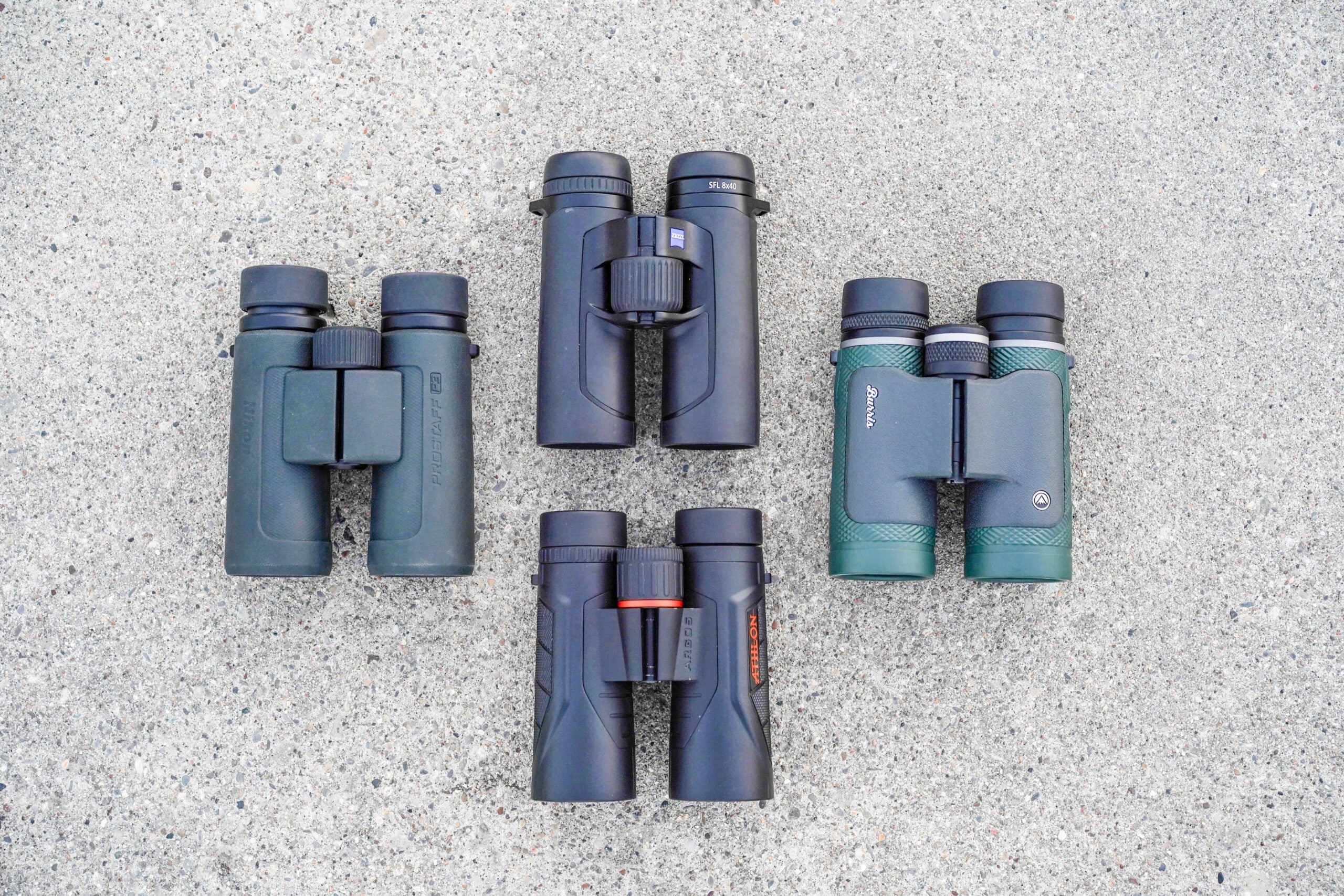
There is no shortage of binoculars that can serve as adequate field optics for hunting, bird-watching, or general environmental viewing, so what qualities elevate an optic into our ranks as the best in the business? The first is consistent performance. We removed from consideration those models that have fussy focus knobs and eyecups that slip or crack. But the biggest factor for us is glassing comfort. Does the binocular fit our hands and face? Is the glass clear and bright enough that we want to keep using it? The more pleasing the glassing experience, the more you’ll glass. The more you glass, the more you’ll see and the more successful your quest, whether for a bird or a buck.
Consider durability? We’re not proud to report that we abuse our optics in the course of a season, as we hike and hunt hard over uneven terrain, and unlike many media titles, we’ll report failures to our audience. The best field-worthy binos have excellent armor and rugged controls that work in below-zero temperatures, in rain, and when we’re wearing gloves.
We consider a variety of magnifications, chassis sizes, and capabilities because every outing is different, and you want to pick the model that matches the way you view the world. If you’re hunting a tight woodlot in Connecticut, you don’t need a big 12-power binocular with a laser rangefinder. But if you’re hunting Dall’s sheep on an open Alaskan mountain ridge, you want as much optical and laser rangefinding horsepower as you can get to make positive identification of your target and then an anchoring shot.
It’s been said that you want to pick the most expensive optic that you can afford, because price and performance are directly proportional when it comes to binoculars. Confirm the warranty and customer-service reputation of the brands, too. If you hunt, hike, and watch wildlife as energetically as we do, there’s every chance that at some point or another, you’ll need to activate the warranty.
Final Thoughts on the Best Binoculars
This is admittedly a partial list, but it’s based on both empirical performance of field-worthy binoculars in the course of our optics testing, and it’s based on our own experience with several of these models. Consider it a good starting point for your own search. The main point: don’t check out one binocular and consider your work done. You’ll want to put several contenders in a head-to-head test and compare and contrast their performance against each other. If you’re still not satisfied, then keep pairing up contenders until you find one that fits your style, particular optical prescription and physical dimensions, and your budget.
- Best for Birdwatching: Zeiss SFL 8×40
- Best Premium: Swarovski NL Pure 12×42
- Best Compact: Maven B.7 8×25
- Best Budget: Vortex Triumph HD 10×42
- Best Rangefinding Binocular: Leupold BX-4 Range 10×42
- Best Ballistic Rangefinding Binocular: Leica Geovid Pro 10×42
- Best Travel Binocular: Leica Trinovid 7×35
- Best 10×42: Vortex Razor HD 10×42
- Nikon Monarch M5 8×42
- Best Mid-Priced Binocular: Tract Toric UHD 10×42
- Best for Stargazing: Nikon Prostaff P3 10×42
- Best Truck Binocular: Athlon Argos G2 UHD 10×42
- Leupold Alpine HD 10×42
- Hawke Vantage 8×32
The post The Best Binoculars of 2023, Tested and Reviewed appeared first on Outdoor Life.
Articles may contain affiliate links which enable us to share in the revenue of any purchases made.

